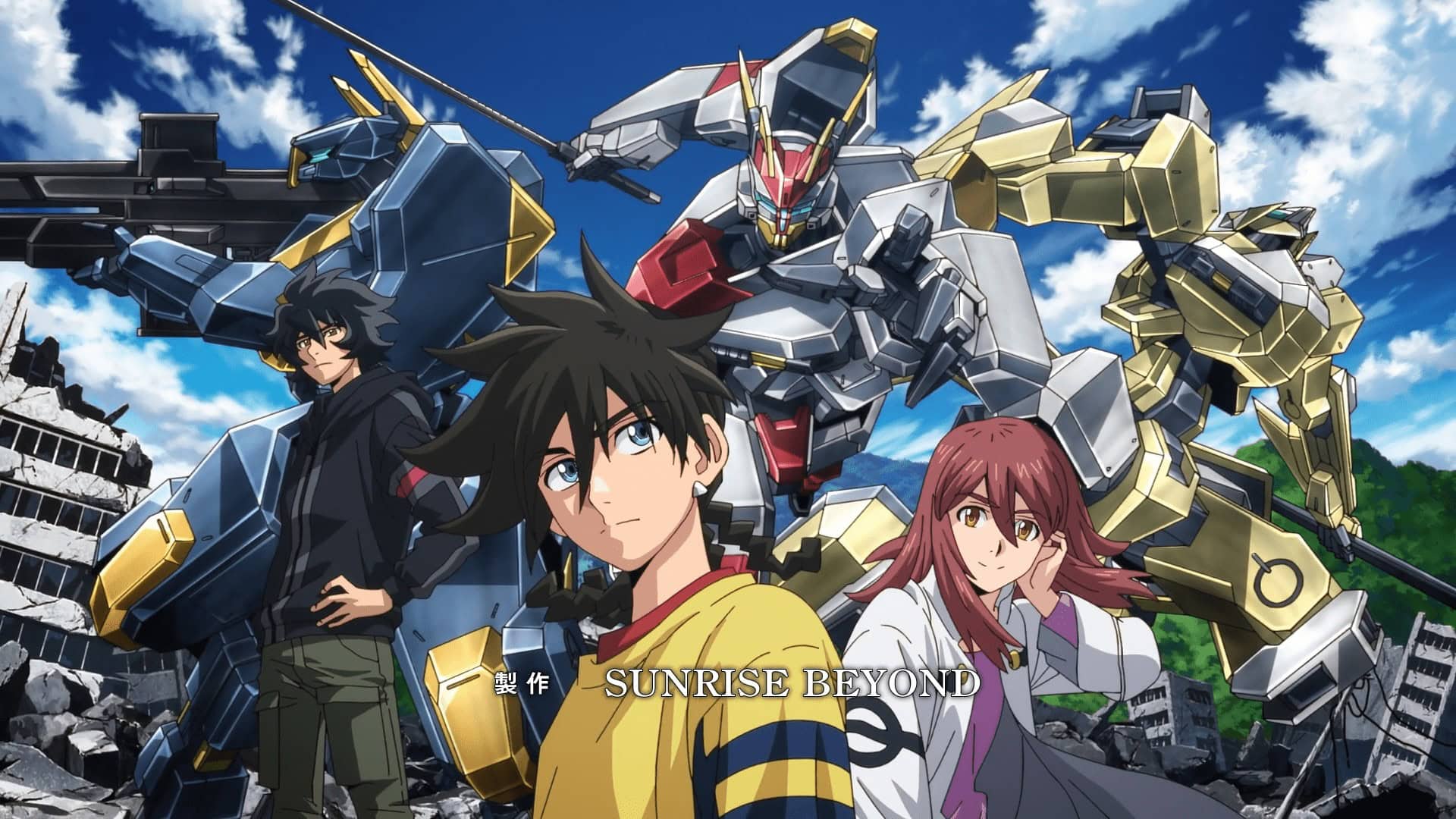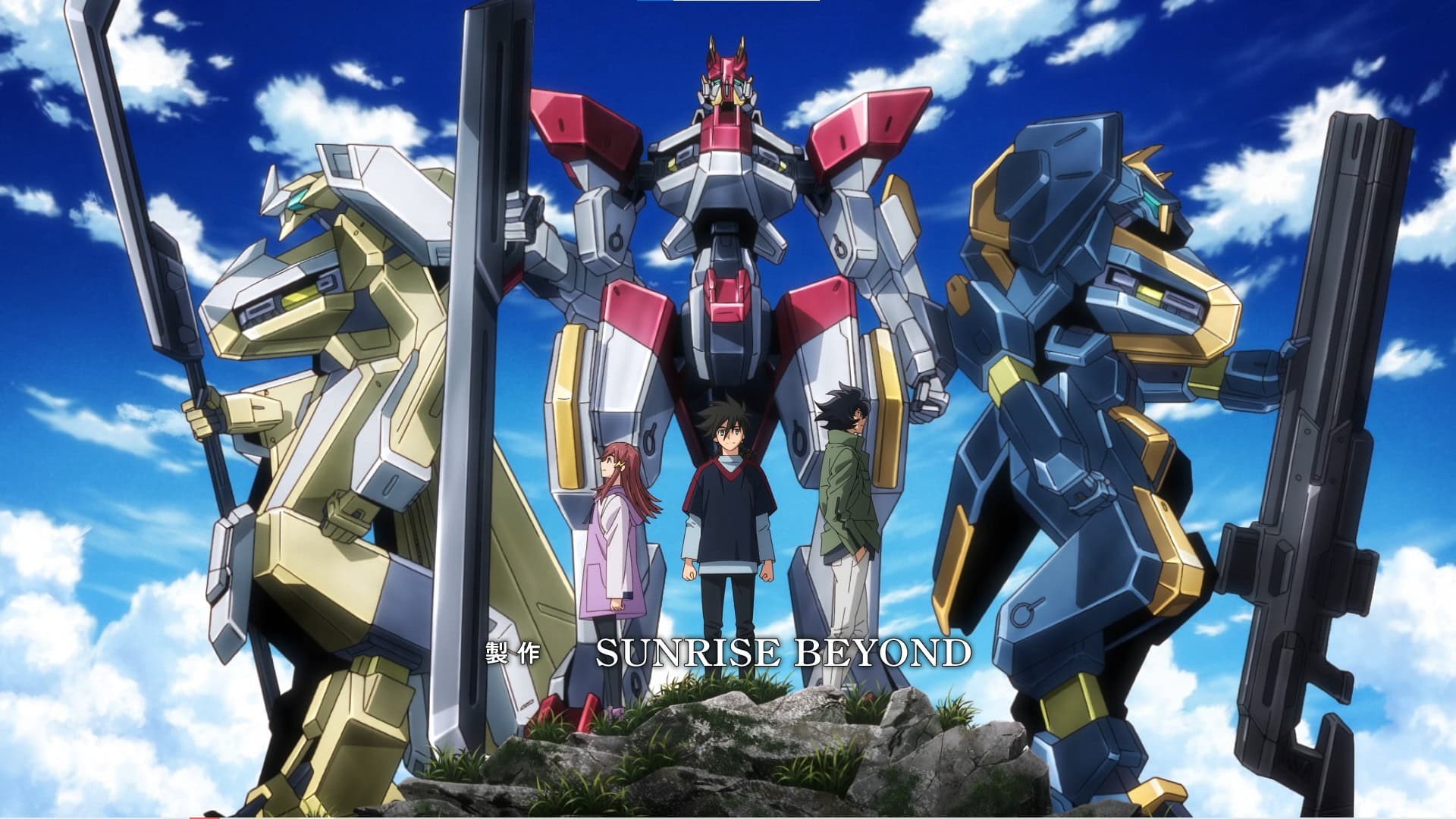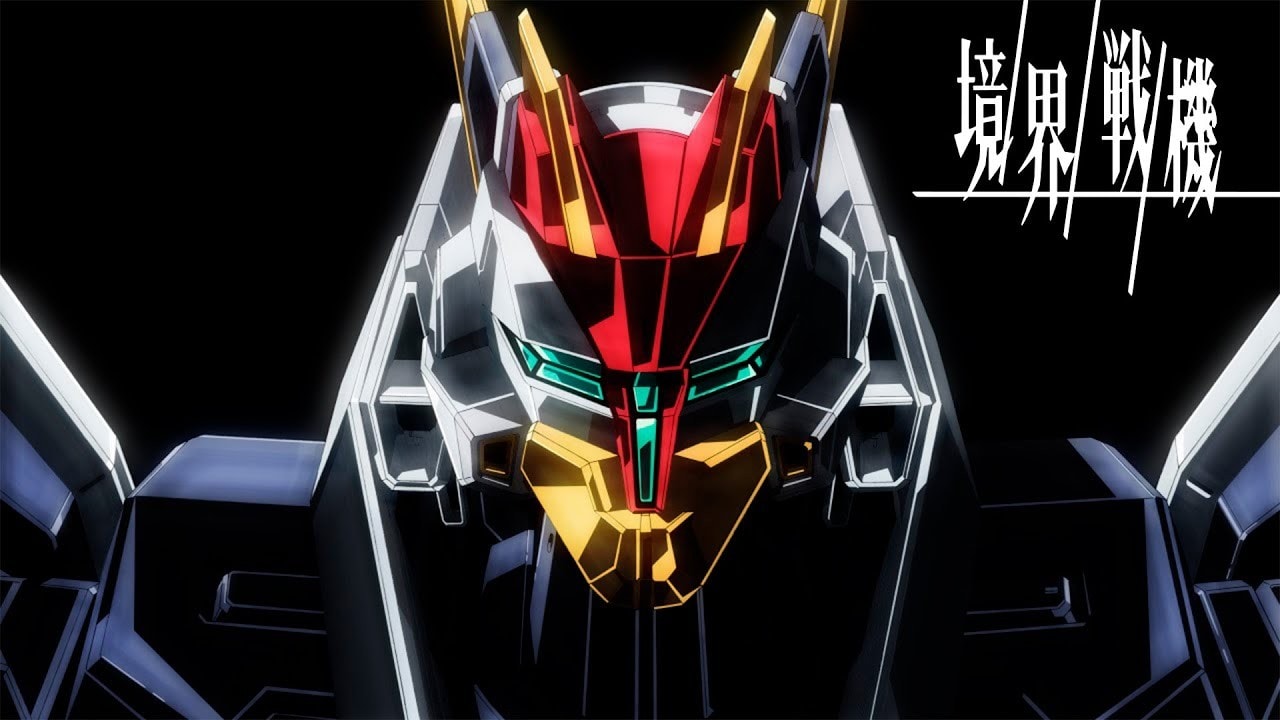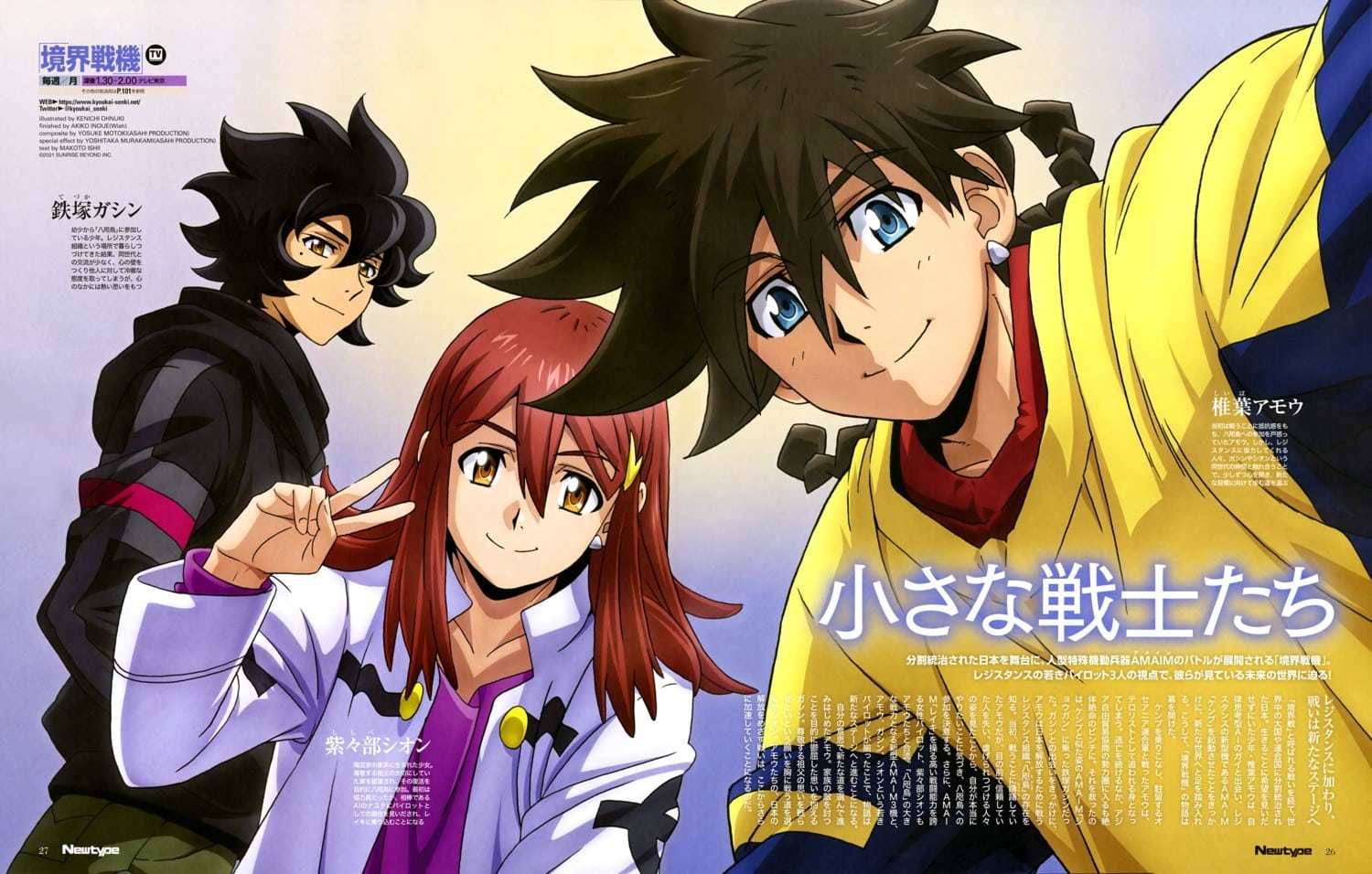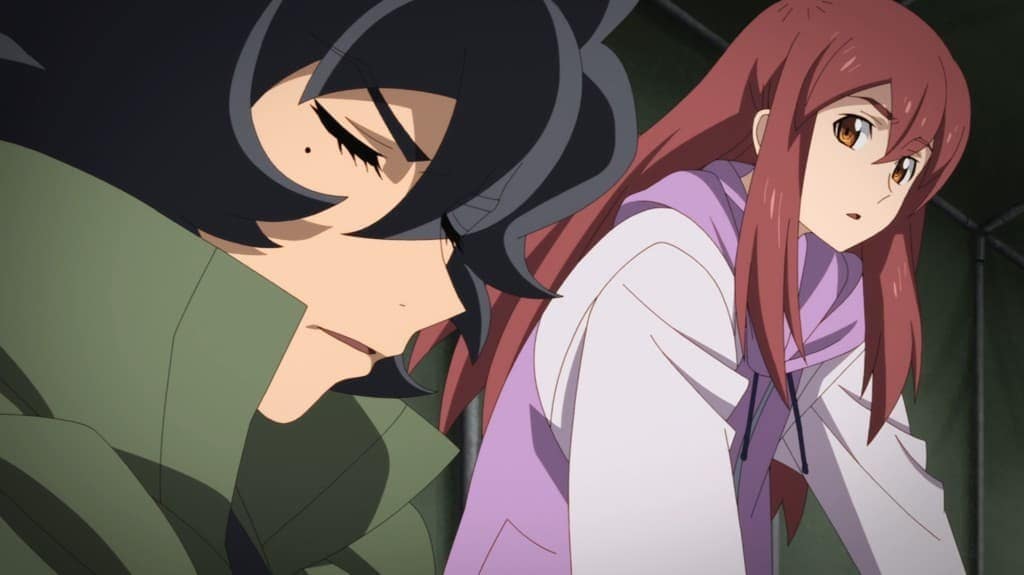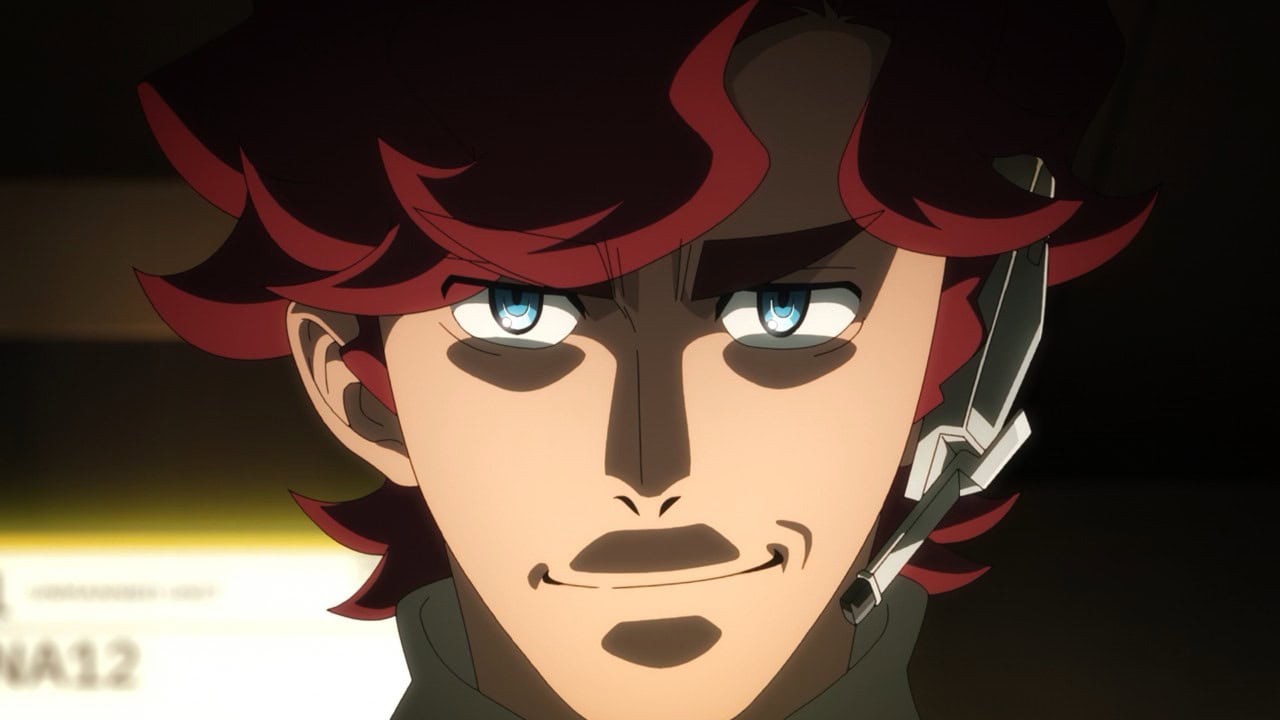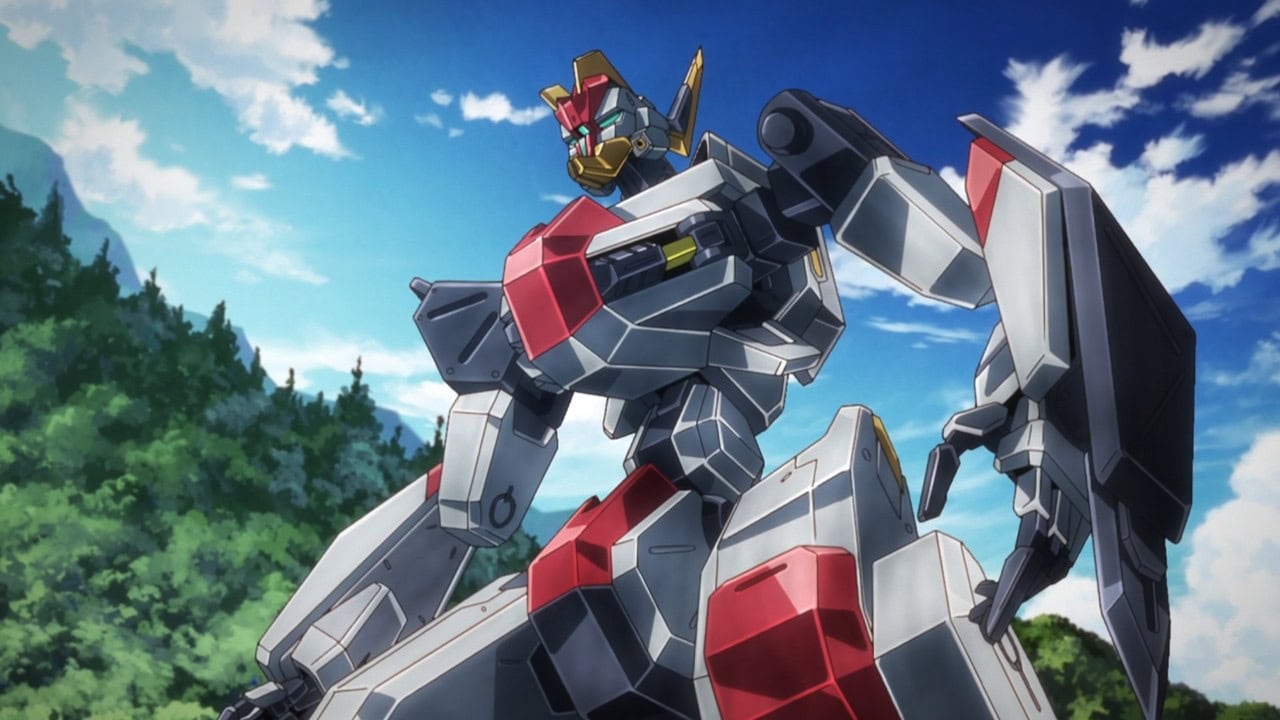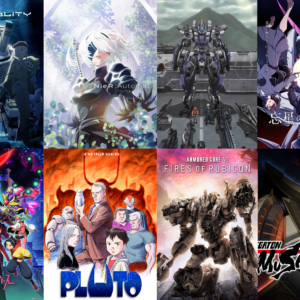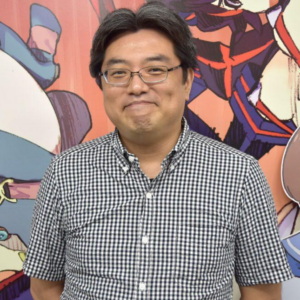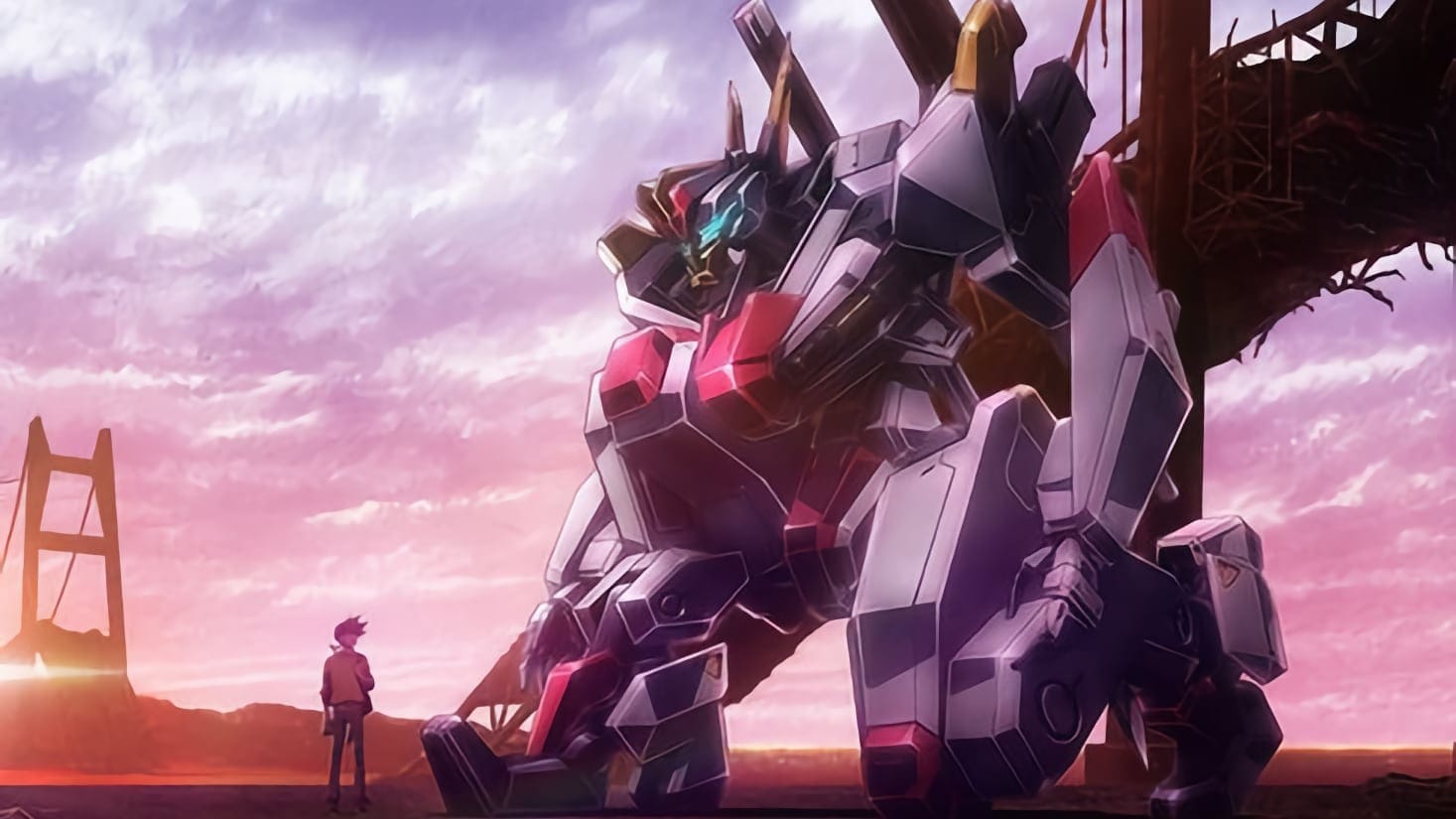
Anime Review: Kyoukai Senki – AMAIM Warrior At The Borderline Of Mediocrity
Nihon no Jiyuu no tame ni!!
2021 was the Mecha year of all Mecha year – however, the biggest giant of all was having a not-so-good-year content wise. Sunrise only released the Hathaway Flash movie in June but other than that, Gundam was having a bit of a drought. So to keep the creative juice going and also to train up the next generation of animators, Sunrise Beyond announce an original mecha series – Kyoukai Senki aka AMAIM Warriors at the Borderline.
The last mecha original IP that Sunrise has done was Cross Ange back in 2014, which is around 7 years of non-stop Gundam, Code Geass and, of course, Love Live. However, with the acquisition of Xebec – now Sunrise Beyond, the company has new blood that are old hands in the art of drawing mecha by hand. And Sunrise is proud to be the one of the few studios that are still doing 2D mecha, so of course they need to freshen up their skills with the team – and what is better than an original IP that even if it’s subpar, noone will really bat an eye since it’s not Gundam? Kyoukai Senki was created as a project to train animators to draw 2D mecha and polish their skills for the real challenge that is to come: Gundam G-Witch.
Kyoukai Senki is also highly political – set in a world where Japan is subservient to foreign economic power blocks – North America, Asia, Russian and even Oceania. Japan was divided like a pie between the foreign powers and its people live a life of oppression and racism. Of course, there are resistances everywhere hoping to liberate Japan from its shackle. But the main character in these mecha series are always an ordinary minor who are pretty much uninvolved in all the fighting and just “happen” upon a giant robot – AMAIM in this world. And that person is Rik…I mean Shiiba Amou – a mechanical enthusiast that loves tinkering around with machinery. And that lead to his encounter with an ILeS – a self-lerning AI named Gai, where he led Amou to the crossroads of his life.
//PLOT//
From the start, you can see the similarity between this series and Code Geass – where Japan is being dominated and its people being looked down on. And the Resistance force is trying to liberate their country as well as saving the Japanese people should they need it. The depiction of foreign powers in the series is quite one-sided, aside from the North America Coalition (ironically). Almost every non-Japanese military figure in the series are some sort of a-holes that look down on Japan and treat the “war” for resources a game – with Japan as the board.
The Resistance is also portrayed with absolute positivity. They are compassionate towards their own people and will spend time helping rebuild a village instead of fighting. They oppose the foreign power with absolute determination and persevere through immense losses and pressure. It’s also worth nothing that the enemy mechs are remote controlled and unmanned so “techincally” the Resistance didn’t kill anyone – whereas the Resistance’s unit are manned, so they are the only ones that suffer casualty. This sort of situation is utterly unfair but also create a clear path for the characters to go on. They just need to destroy every enemy mechs without having to worry about blood on their hands. The only time where we see something close to a mutual bloodshed was when Amou and co went up against the Eurasian general Alexei – whose pastime is manned mecha combat.
The story progression is quite similar to Code Geass/Gundam where our protag Amou had to get used to the drastic changes in his life. He was living normally as a student when his world was turned upside down and all of a sudden he’s a mecha pilot fighting a literal war for his country. The reality of the situation hit him hard and it took time for Amou to finally decided to fight – albeit with the oldest push in the book: the loss of a life. And that’s where Kyoukai Senki’s problem started to rear its ugly head: the plot is too predictable.
While they threw in a few elements that “might” be surprising in this kind of story, in an overall perspective, there are too many predictabilities that was telegraphed way before it actually happen. These developments are tropes of the franchise and it isn’t a bad thing to include them, it’s just that viewers can tell how the story will progress in the future with high accuracy – which makes the plot become a drag. This keep on happening until the end of season 2 where the story concluded with an anti-climactic ending and a huge rug-pull from underneath the viewers. The resolution for the conflict and Japan’s situation is all but a masquerade and the “villains” turn out to not be the villain and only pen-pushers got punished which is kinda lackluster.
From the start, you can see the similarity between this series and Code Geass – where Japan is being dominated and its people being looked down on. And the Resistance force is trying to liberate their country as well as saving the Japanese people should they need it. The depiction of foreign powers in the series is quite one-sided, aside from the North America Coalition (ironically). Almost every non-Japanese military figure in the series are some sort of a-holes that look down on Japan and treat the “war” for resources a game – with Japan as the board.
The Resistance is also portrayed with absolute positivity. They are compassionate towards their own people and will spend time helping rebuild a village instead of fighting. They oppose the foreign power with absolute determination and persevere through immense losses and pressure. It’s also worth nothing that the enemy mechs are remote controlled and unmanned so “techincally” the Resistance didn’t kill anyone – whereas the Resistance’s unit are manned, so they are the only ones that suffer casualty. This sort of situation is utterly unfair but also create a clear path for the characters to go on. They just need to destroy every enemy mechs without having to worry about blood on their hands. The only time where we see something close to a mutual bloodshed was when Amou and co went up against the Eurasian general Alexei – whose pastime is manned mecha combat.
The story progression is quite similar to Code Geass/Gundam where our protag Amou had to get used to the drastic changes in his life. He was living normally as a student when his world was turned upside down and all of a sudden he’s a mecha pilot fighting a literal war for his country. The reality of the situation hit him hard and it took time for Amou to finally decided to fight – albeit with the oldest push in the book: the loss of a life. And that’s where Kyoukai Senki’s problem started to rear its ugly head: the plot is too predictable.
While they threw in a few elements that “might” be surprising in this kind of story, in an overall perspective, there are too many predictabilities that was telegraphed way before it actually happen. These developments are tropes of the franchise and it isn’t a bad thing to include them, it’s just that viewers can tell how the story will progress in the future with high accuracy – which makes the plot become a drag. This keep on happening until the end of season 2 where the story concluded with an anti-climactic ending and a huge rug-pull from underneath the viewers. The resolution for the conflict and Japan’s situation is all but a masquerade and the “villains” turn out to not be the villain and only pen-pushers got punished which is kinda lackluster.
//CHARACTERS//
The main character – Shiiba Amou – is a very likeable guy – but that’s about as far as he goes in terms of personality. He doesn’t have many breakthrough traits nor does he is overly zealous about things. He’s friendly, reasonable and sorta easy to be swept along with things (like a literal revolution). He’s a very cut-and-dry model of a typical Real Robot pilot – particularly Sunrise’s. He’s very similar to Haruto from Valvrave, Aoba from Buddy Complex, a bit of Kallen from Code Geass and mix in a bit of tech nerd and then you get a pretty interesting template MC to develop. Sadly they didn’t spend a lot of time developing him, or rather didn’t give him any breakthroughs aside from the most vanilla of characterization. Amou went from clueless and unwilling boy into reluctant pilot, then into a fully committed soldier BUT still naive, then a PTSD-ridden child soldier but then recovered in the span of 20 minutes, and then he went on to become an ace pilot with all brawn and no brains (well not alot). His mechanical tinkering trait was removed super fast from the story and he just become a mecha pilot full-time.
He had a few first battles, then he positively thought that he can and will make a difference, then reality hit him a few times, then we went all emo and brooding but then cheered up almost instantly after meeting his friends (who thought he was dead by the way!). Yes Amou pulled a Kira – which was super obvious to us that he’s not dead after he blew up with Ghost. Since at the time, they already announced the successor of the Kenbu as well as a season 2 teaser right after, so nobody really truly believed that Amou was gone. So the only “emotional” effect they got out of that blast was lasting for all of 5 seconds. It’s really sad that they could have done so much more with Amou even after season 1’s vanilla development. Season 2 had a lot of opportunities to turn Amou’s character around and pulled a great development and plot twist with his development. However, they stuck with the happy-go-lucky and good ending style and eventually, he blurred into the background with the other pilots.
Then we get Gai – Shiiba’s ILeS – basically an AI buddy that accompany him in everyday life as well as in battle. Gai at first glance is pretty much an ideal battle AI that can hack into things, help the pilot control the mech with ease, and all that fancy supercomputer stuff. But as the series went on, Gai also developed “emotions”, a sense of “camaraderie” with Shiiba and the other pilot. At the end of the series, he felt like a virtual friend for the characters, unlike the other ILeSes. Which makes sense because he’s the main ILeS for the main character. Well some viewers might find him a bit annoying because he talks A LOT, and Sunrise did use a voice-manipulation mechanism for him to make him sound like a kid, and some felt that Gai took away from Amou in that he is the one doing the bulk of the “backend” mecha stuff, where Amou just need to pull a few levers and bang bang bang, all done.
The main character – Shiiba Amou – is a very likeable guy – but that’s about as far as he goes in terms of personality. He doesn’t have many breakthrough traits nor does he is overly zealous about things. He’s friendly, reasonable and sorta easy to be swept along with things (like a literal revolution). He’s a very cut-and-dry model of a typical Real Robot pilot – particularly Sunrise’s. He’s very similar to Haruto from Valvrave, Aoba from Buddy Complex, a bit of Kallen from Code Geass and mix in a bit of tech nerd and then you get a pretty interesting template MC to develop. Sadly they didn’t spend a lot of time developing him, or rather didn’t give him any breakthroughs aside from the most vanilla of characterization. Amou went from clueless and unwilling boy into reluctant pilot, then into a fully committed soldier BUT still naive, then a PTSD-ridden child soldier but then recovered in the span of 20 minutes, and then he went on to become an ace pilot with all brawn and no brains (well not alot). His mechanical tinkering trait was removed super fast from the story and he just become a mecha pilot full-time.
He had a few first battles, then he positively thought that he can and will make a difference, then reality hit him a few times, then we went all emo and brooding but then cheered up almost instantly after meeting his friends (who thought he was dead by the way!). Yes Amou pulled a Kira – which was super obvious to us that he’s not dead after he blew up with Ghost. Since at the time, they already announced the successor of the Kenbu as well as a season 2 teaser right after, so nobody really truly believed that Amou was gone. So the only “emotional” effect they got out of that blast was lasting for all of 5 seconds. It’s really sad that they could have done so much more with Amou even after season 1’s vanilla development. Season 2 had a lot of opportunities to turn Amou’s character around and pulled a great development and plot twist with his development. However, they stuck with the happy-go-lucky and good ending style and eventually, he blurred into the background with the other pilots.
Then we get Gai – Shiiba’s ILeS – basically an AI buddy that accompany him in everyday life as well as in battle. Gai at first glance is pretty much an ideal battle AI that can hack into things, help the pilot control the mech with ease, and all that fancy supercomputer stuff. But as the series went on, Gai also developed “emotions”, a sense of “camaraderie” with Shiiba and the other pilot. At the end of the series, he felt like a virtual friend for the characters, unlike the other ILeSes. Which makes sense because he’s the main ILeS for the main character. Well some viewers might find him a bit annoying because he talks A LOT, and Sunrise did use a voice-manipulation mechanism for him to make him sound like a kid, and some felt that Gai took away from Amou in that he is the one doing the bulk of the “backend” mecha stuff, where Amou just need to pull a few levers and bang bang bang, all done.
[SIDE CHARACTERS]
And then we got to possibly the dark horse of the series: Tezuka Gashin. Gashin plays the role of Kyoukai Senki secondary pilot and the Resistance team’s dedicated sniper. He was established as a direct victim of the oppression of Japan – where his father was killed as a member of the Resistance. His motivation is obviously the clearest so as to spur Amou into action as well. At first glance, you can see he’s just your typical war orphan that decided to take up his father’s work as his own. He’s hard to get close to, and is extremely allergic to having “outsiders” that don’t share his cause of of fighting off the foreign powers and restore Japan’s freedom.
But over time, Tezuka has grown as a person and not just act like a grumpy and stoic guy anymore. Don’t get me wrong, his personality didn’t do a 180, but he’s more understanding, more reasonable, more willing to work with others and he especially care more for his comrade. He mellowed out greatly between the two season after witnessing the “supposed” demise of Amou and Gai. That event acted as a reckoning for him to change after he spent time with Shiiba and realized that even though they are very different people and the reason they are fighting aren’t the same, they are comrades in arms and are wishing for the same ultimate goal. In a way, Amou is a foil for Tezuka to grow, and I can say for certain that he is the best developed character of the series.
Then we come to the poster girl pilot of the series – Shishibe Shion. Her motivation for joining the Resistance is highly personal – which is to restore Japan’s sovereign so as to reopen her family workshop. Now compared to Amou or the more tenacious Tezuka, her drive feels the most “homely” and “mundane”. But if you think about it, it’s a reasonable motivation. Human are highly individualistic creatures, but we cannot function without a society. Therefore, we need to start small and work towards something bigger. Shion’s initial goal may just be to restore her family workshop, but gradually, it turned into liberating Japan. A small flame can turn into a giant blaze if you put many together. Each person in the Resistance has their own “personal” reason to fight, but their ultimate goal is still Japan’s liberation.
However, Shion didn’t get much development. She has a bit where her mentality was shaken after the first season when Amou was thought to be gone, but after he pulled a Jesus Yamato, Shion reverted back to the kind and gentle girl that she was. You can say the three pilot form a stable triangle that from start to end, it didn’t expand much or get skewed. They are stable, with very little variation to their initial development. Tezuka is the person that change the most. Shiiba changed a lot as well but he reverted back to his season 1 settings just as fast. There’s not much to talk about Shion aside from her being a very good “poster” girl.
For Tezuka’s and Shion’s ILeS, they are pretty much mascot character that accentuates their master’s personality and act as a bouncing board for their thoughts and dialogues.
And then we got to possibly the dark horse of the series: Tezuka Gashin. Gashin plays the role of Kyoukai Senki secondary pilot and the Resistance team’s dedicated sniper. He was established as a direct victim of the oppression of Japan – where his father was killed as a member of the Resistance. His motivation is obviously the clearest so as to spur Amou into action as well. At first glance, you can see he’s just your typical war orphan that decided to take up his father’s work as his own. He’s hard to get close to, and is extremely allergic to having “outsiders” that don’t share his cause of of fighting off the foreign powers and restore Japan’s freedom.
But over time, Tezuka has grown as a person and not just act like a grumpy and stoic guy anymore. Don’t get me wrong, his personality didn’t do a 180, but he’s more understanding, more reasonable, more willing to work with others and he especially care more for his comrade. He mellowed out greatly between the two season after witnessing the “supposed” demise of Amou and Gai. That event acted as a reckoning for him to change after he spent time with Shiiba and realized that even though they are very different people and the reason they are fighting aren’t the same, they are comrades in arms and are wishing for the same ultimate goal. In a way, Amou is a foil for Tezuka to grow, and I can say for certain that he is the best developed character of the series.
Then we come to the poster girl pilot of the series – Shishibe Shion. Her motivation for joining the Resistance is highly personal – which is to restore Japan’s sovereign so as to reopen her family workshop. Now compared to Amou or the more tenacious Tezuka, her drive feels the most “homely” and “mundane”. But if you think about it, it’s a reasonable motivation. Human are highly individualistic creatures, but we cannot function without a society. Therefore, we need to start small and work towards something bigger. Shion’s initial goal may just be to restore her family workshop, but gradually, it turned into liberating Japan. A small flame can turn into a giant blaze if you put many together. Each person in the Resistance has their own “personal” reason to fight, but their ultimate goal is still Japan’s liberation.
However, Shion didn’t get much development. She has a bit where her mentality was shaken after the first season when Amou was thought to be gone, but after he pulled a Jesus Yamato, Shion reverted back to the kind and gentle girl that she was. You can say the three pilot form a stable triangle that from start to end, it didn’t expand much or get skewed. They are stable, with very little variation to their initial development. Tezuka is the person that change the most. Shiiba changed a lot as well but he reverted back to his season 1 settings just as fast. There’s not much to talk about Shion aside from her being a very good “poster” girl.
For Tezuka’s and Shion’s ILeS, they are pretty much mascot character that accentuates their master’s personality and act as a bouncing board for their thoughts and dialogues.
For the “bad guys”, it’s quite hard to put a label on a specific character in this series. Well, from the start, we can say that the four economic blocs are the bad guys because they quite literally annexed Japan and split the rewards. The soldiers from those nations also act like a-holes towards every Japanese they came across. They even treated them as playthings and didn’t mind “weeding” off a few. But by the end, some of those very same characters became allies with the Resistance and was willing to establish a treaty with Japan. It just doesn’t feel very satisfying to leave it at that. Furthermore, many Resistance has fallen and they paid with blood and metal, but the foreign power only lost the latter part. All the lost were some scrap metals while their “esteemed” personnel sit back in the rear and play Armored Core on extreme difficulty (and they suck at it). At least at the end, Japan has a chance to recover. But still, military might isn’t the be-all-end-all during a time where economy and politics are so tightly woven together. The other economic blocs can just starve Shin Japan’s economy and everything will just return to what it was before. But the story ends right then and there so…let’s not think about that.
And then we have Brad – the ultimate “bad guy” in the series. When he was first introduced, he was made to be a very Yang Wen-li character. He’s got mad skills, respected by his subordinate, kinda sorta overlooked by the superiors, but above all – he’s a reasonable person. He’s one of the only people who didn’t treat Japanese like trash. He analyzes every situation he’s in and nudges the pieces he want into their place to accomplish his objectives. At the end of season 1, he felt like a perfect Gary Stu with zero weaknesses (maybe a bad haircut? but I think he looks fine). But then season 2 came and he became the opposite. He felt like a smarty pants trying to manipulating things but fell into the trap every cliché villains did: fixation on excitement. He played the bad guy and do all these weird plot just to have a chance to pilot Ghost and fight against Amou in his Kenbu. His motivation is understandable but how he execute his plan in season 2 really contradict his image in season 1. And at the end, he still got off without suffering too much consequences so I guess he’s…not…the bad guy after all? When he revealed that “Oh I was just faking.”, I can tell many people was like “WTF, is that why you did all those bs?” You can tell from the series plot progression that the plot and character development wasn’t the priority for the series.
And then we have Brad – the ultimate “bad guy” in the series. When he was first introduced, he was made to be a very Yang Wen-li character. He’s got mad skills, respected by his subordinate, kinda sorta overlooked by the superiors, but above all – he’s a reasonable person. He’s one of the only people who didn’t treat Japanese like trash. He analyzes every situation he’s in and nudges the pieces he want into their place to accomplish his objectives. At the end of season 1, he felt like a perfect Gary Stu with zero weaknesses (maybe a bad haircut? but I think he looks fine). But then season 2 came and he became the opposite. He felt like a smarty pants trying to manipulating things but fell into the trap every cliché villains did: fixation on excitement. He played the bad guy and do all these weird plot just to have a chance to pilot Ghost and fight against Amou in his Kenbu. His motivation is understandable but how he execute his plan in season 2 really contradict his image in season 1. And at the end, he still got off without suffering too much consequences so I guess he’s…not…the bad guy after all? When he revealed that “Oh I was just faking.”, I can tell many people was like “WTF, is that why you did all those bs?” You can tell from the series plot progression that the plot and character development wasn’t the priority for the series.
//VISUAL//
Well this is where the series shine. Just before the series’ airing, Sunrise has made a statement that “they are proud to be the only studio using primarily hand-drawn technique to draw mecha.”. Furthermore, they also stated that Kyoukai Senki is a project to train up some young animators of Sunrise Beyond – the new studio they established after buying off Xebec’s 2D department (which did Full Metal Panic!). And all in all, they accomplished this objective beautifully. The animation flows amazing – partly thanks to the eccentric mecha design as well.
The explosive effects as well as other special effects were also beautifully done. They might be done heavily in digital but the talents of the animators are definitely not up for a debate. All the in-between frames were actually quite detailed as well. Even if you pause during “awkward moments” and look at objects in the background, they are still much more detailed than some other recent Sunrise series like Gundam IBO, Build Divers etc… Kenbu is definitely the highlight of the series, every battle it was in was done beautifully down to the last details. For the other two – Jogan and Reiki – their debut battles were the most impressive, as well as their upgrades debut. Otherwise, they are very well done but not overly excellent. The best fight is no doubt between the three MAILeS and Ghost, as well as Kenbu Zan’s final fight with Brad.
The character animation is also well done, very detailed frames so the overall quality of Kyoukai Senki is very high.
//MECHA DESIGN//
This series features Yuuya Koyanagi (from Ken Okuyama Design) to design the main MAILeS from the series. Ken Okuyama previously designed the RX-78-2 Gundam Industrial Type, so you can expect the MAILeS to be heavily inspired from real life heavy machinery. The MAILeS has that armored-car-with-limbs feeling along with segmented arms and legs which is very unconventional in mecha. The only other time I’ve seen this style is Kuromukuro. This design style make the movement of the MAILeS feels like an athlete with how they bend their limbs and then extend if for maximum explosive hydraulic power. Whenever you see the Kenbu or Reiki going full melee, it’s absolutely amazing due to their super sleek and streamlined design. Of course the reverse limb style may look silly at first in straight up standing position, but we rarely see them in this stance anyway.
Another iconic design from the series is the GHOST – the autonomous AMAIM that fight anything it encounter. The Ghost is also from Yuuya Koyanagi. And it just exudes villain aura with its intimidating thicc thighs and fore arms and the jet black color-scheme with red accents. It definitely looks like a savage beast that will rip you to shreds with its bare hands. Coupled with the incredible adaptability and intelligence of its AI, the Ghost is one of the scariest mech to go against in the series.
For the other blocs’ mech. They are each designed by a different mecha designer to give them different vibes and aesthetic. I think it’s a very smart move to do to lessen the work on a single designer and create uniqueness among different factions. Of course there are favoritism amongst them, especially the North American one. The NAC AMAIMs are designed by none other than Kanetake Ebikawa – the ultimate military mecha designer. The Oceania squad are Yuuya Koyanagi design as well (you can see it from the legs), the Eurasia is by Kenji Teraoka – who also designed the Tierens and Aheads in 00, the Asian faction is by Ippei Gyoubu – whose style is very distinctive with those strange feet.
Well this is where the series shine. Just before the series’ airing, Sunrise has made a statement that “they are proud to be the only studio using primarily hand-drawn technique to draw mecha.”. Furthermore, they also stated that Kyoukai Senki is a project to train up some young animators of Sunrise Beyond – the new studio they established after buying off Xebec’s 2D department (which did Full Metal Panic!). And all in all, they accomplished this objective beautifully. The animation flows amazing – partly thanks to the eccentric mecha design as well.
The explosive effects as well as other special effects were also beautifully done. They might be done heavily in digital but the talents of the animators are definitely not up for a debate. All the in-between frames were actually quite detailed as well. Even if you pause during “awkward moments” and look at objects in the background, they are still much more detailed than some other recent Sunrise series like Gundam IBO, Build Divers etc… Kenbu is definitely the highlight of the series, every battle it was in was done beautifully down to the last details. For the other two – Jogan and Reiki – their debut battles were the most impressive, as well as their upgrades debut. Otherwise, they are very well done but not overly excellent. The best fight is no doubt between the three MAILeS and Ghost, as well as Kenbu Zan’s final fight with Brad.
The character animation is also well done, very detailed frames so the overall quality of Kyoukai Senki is very high.
//MECHA DESIGN//
This series features Yuuya Koyanagi (from Ken Okuyama Design) to design the main MAILeS from the series. Ken Okuyama previously designed the RX-78-2 Gundam Industrial Type, so you can expect the MAILeS to be heavily inspired from real life heavy machinery. The MAILeS has that armored-car-with-limbs feeling along with segmented arms and legs which is very unconventional in mecha. The only other time I’ve seen this style is Kuromukuro. This design style make the movement of the MAILeS feels like an athlete with how they bend their limbs and then extend if for maximum explosive hydraulic power. Whenever you see the Kenbu or Reiki going full melee, it’s absolutely amazing due to their super sleek and streamlined design. Of course the reverse limb style may look silly at first in straight up standing position, but we rarely see them in this stance anyway.
Another iconic design from the series is the GHOST – the autonomous AMAIM that fight anything it encounter. The Ghost is also from Yuuya Koyanagi. And it just exudes villain aura with its intimidating thicc thighs and fore arms and the jet black color-scheme with red accents. It definitely looks like a savage beast that will rip you to shreds with its bare hands. Coupled with the incredible adaptability and intelligence of its AI, the Ghost is one of the scariest mech to go against in the series.
For the other blocs’ mech. They are each designed by a different mecha designer to give them different vibes and aesthetic. I think it’s a very smart move to do to lessen the work on a single designer and create uniqueness among different factions. Of course there are favoritism amongst them, especially the North American one. The NAC AMAIMs are designed by none other than Kanetake Ebikawa – the ultimate military mecha designer. The Oceania squad are Yuuya Koyanagi design as well (you can see it from the legs), the Eurasia is by Kenji Teraoka – who also designed the Tierens and Aheads in 00, the Asian faction is by Ippei Gyoubu – whose style is very distinctive with those strange feet.
//MUSIC//
The Music is acutally another aspect that was invested in quite well. The first OP was a very nice J-Rock song by Blank Paper. The 2nd season OP was less energetic but still quite upbeat. I have to say, the first OP definitely leave more of an impression. However, the 2nd season ED was more impressive due to it being produced by none other than Sawano Hiroyuki. The OST is also well done but nothing too iconic.
//CONCLUSION//
At its core, Kyoukai Senki is essentially a training project and placeholder for the next Gundam series by Sunrise. It is a very visually beautiful series because it was literally used as animation training for Sunrise Beyond animators. And the masterclass definitely paid off as you can see in G-Witch. The scripts and characters weren’t the focus of the series and they use a lot of cliché tropes and development for those aspects. You can pretty much guess how things will turn out or if someone actually died or is going to die etc. But overall, for a mecha series, it does have its impact – which are unique mecha designs, a pretty good soundtrack and amazing animation.
The Music is acutally another aspect that was invested in quite well. The first OP was a very nice J-Rock song by Blank Paper. The 2nd season OP was less energetic but still quite upbeat. I have to say, the first OP definitely leave more of an impression. However, the 2nd season ED was more impressive due to it being produced by none other than Sawano Hiroyuki. The OST is also well done but nothing too iconic.
//CONCLUSION//
At its core, Kyoukai Senki is essentially a training project and placeholder for the next Gundam series by Sunrise. It is a very visually beautiful series because it was literally used as animation training for Sunrise Beyond animators. And the masterclass definitely paid off as you can see in G-Witch. The scripts and characters weren’t the focus of the series and they use a lot of cliché tropes and development for those aspects. You can pretty much guess how things will turn out or if someone actually died or is going to die etc. But overall, for a mecha series, it does have its impact – which are unique mecha designs, a pretty good soundtrack and amazing animation.
Check out more recommendations:
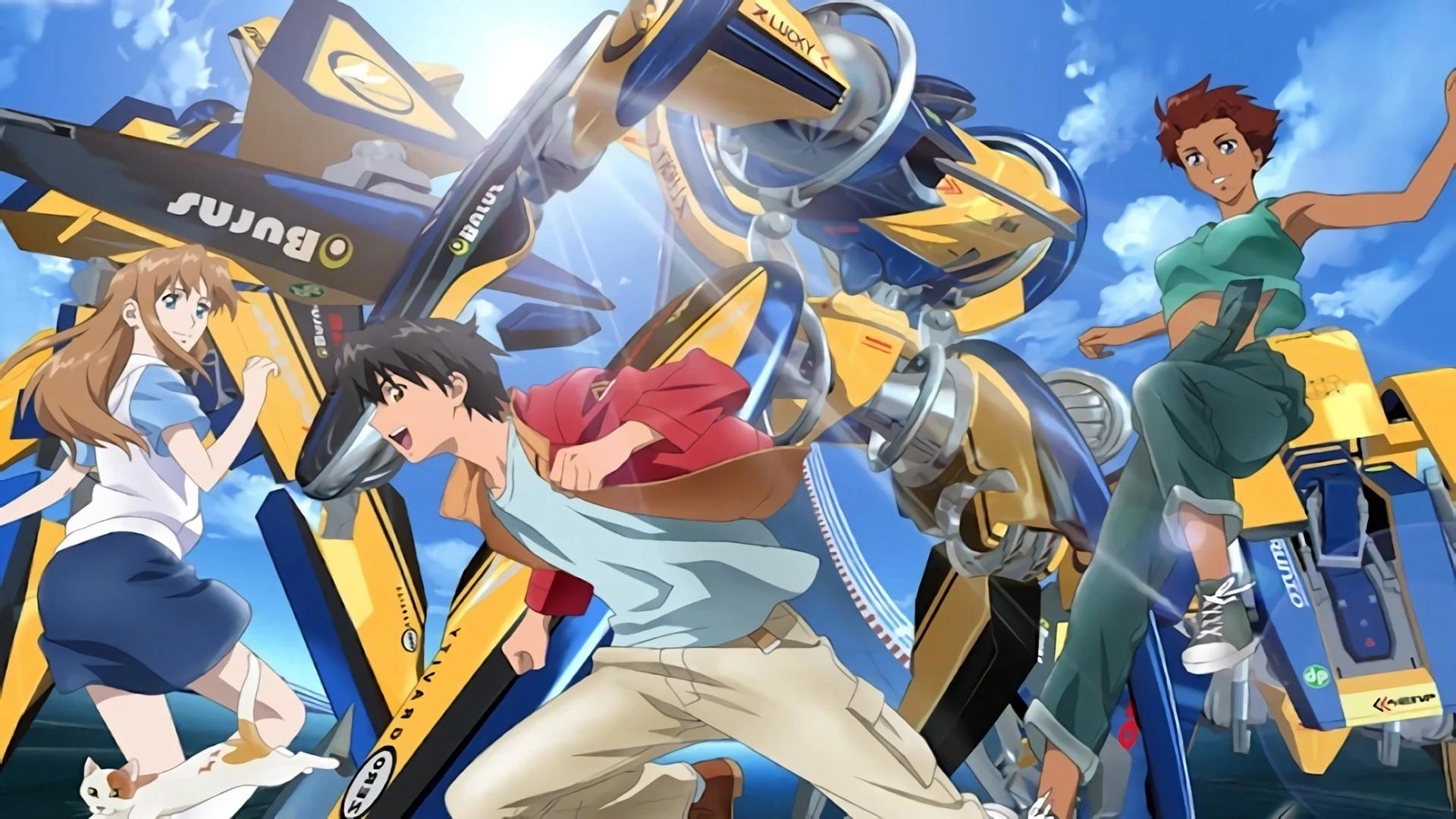
I am speed! Sports mecha isn’t very common. But when done right, it can deliver a rush just like other mecha series. Join the Immortal Grand Prix for some adrenaline-pumping races!
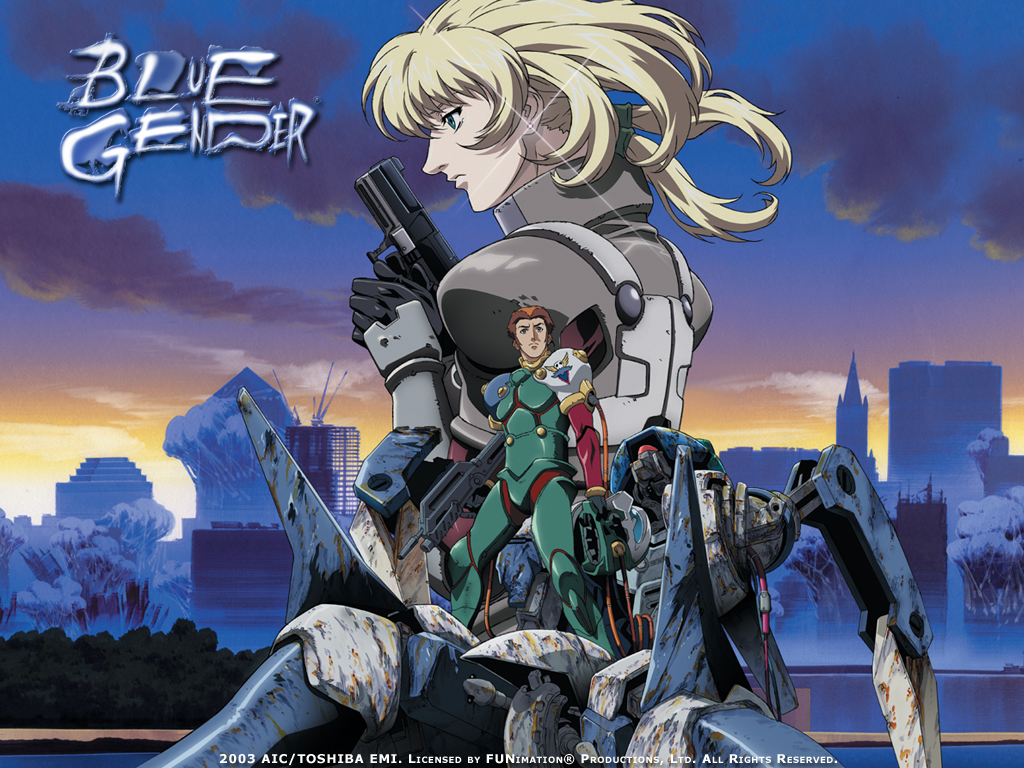
A classic premise of human versus monsters that push one’s limit to the max. But can our hero overcome that limit, or succumb to the unending fires of war.

An action-filled romcom that takes place in the vast space, Vandread is a story about a society divided. For some obscure reasons, men and women are forced to live separately on different colonies, destined to never come into contact with each other. Until the day Hibiki Tokai, our teenage hormone-filled male, decided to steal a Vanguard – a mecha used for the gender war. He then got caught in an attack by female pirates and was forced to journey with them when they all got thrown through a wormhole and had to look for a…
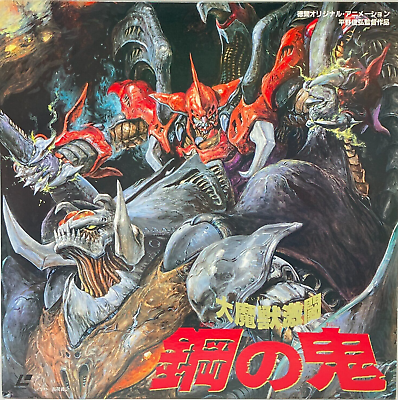
Daimajū Gekitō: Hagane no Oni (大魔獣激闘 ~鋼の鬼~, Fierce Battle of Colossal Beasts: Steel Devil) is a 1987 Japanese original video animation directed by Toshiki Hirano, with a screenplay by Shō Aikawa. Mechanical designs were handled by Kōichi Ōhata, and Masami Ōbari served as animation director. The story follows Takuya, who visits a research facility to reconnect with an old friend, uncovering their shared involvement in a mysterious experiment conducted three years earlier, in 1984.
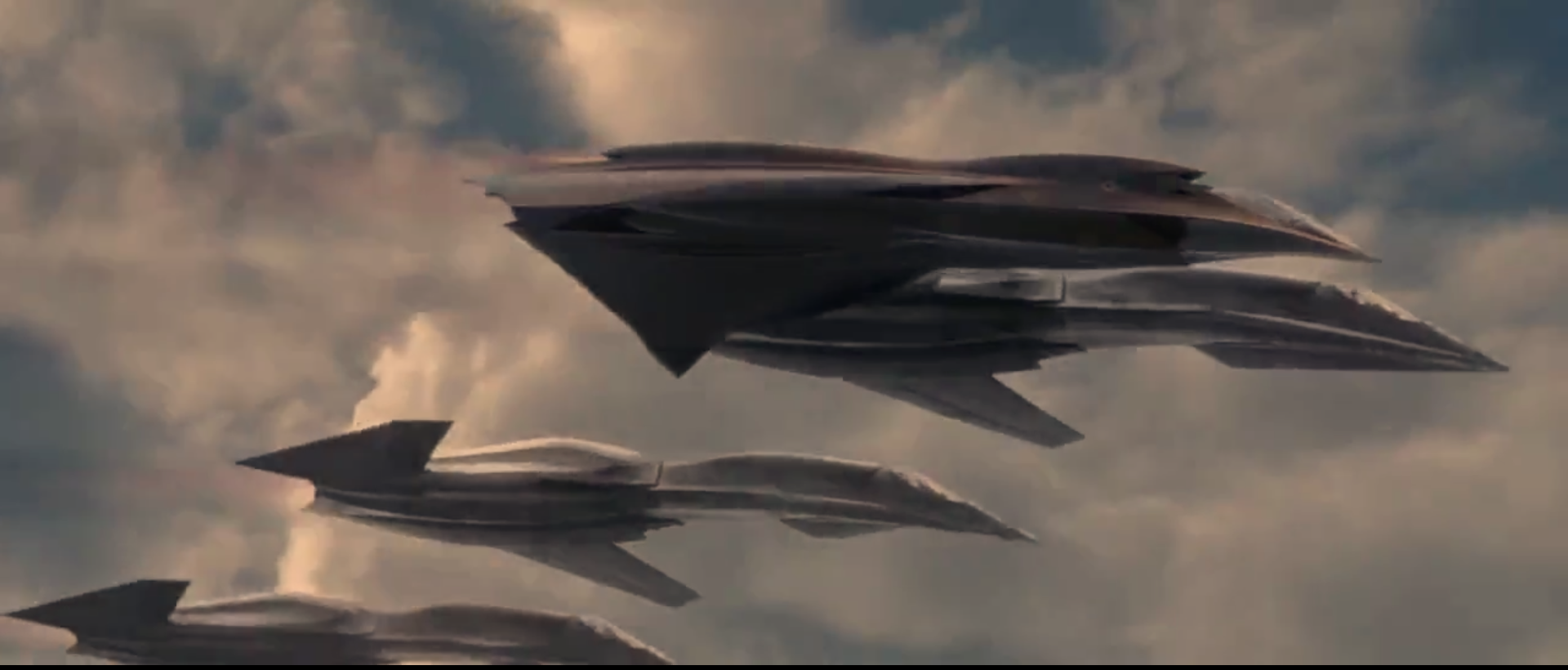
Let’s turn and burn! A movie about futuristic stealth fighter and AI-jet. Sounds familiar? This is Macross Plus live action with a sprinkle of Ace Combat and Yukikaze.
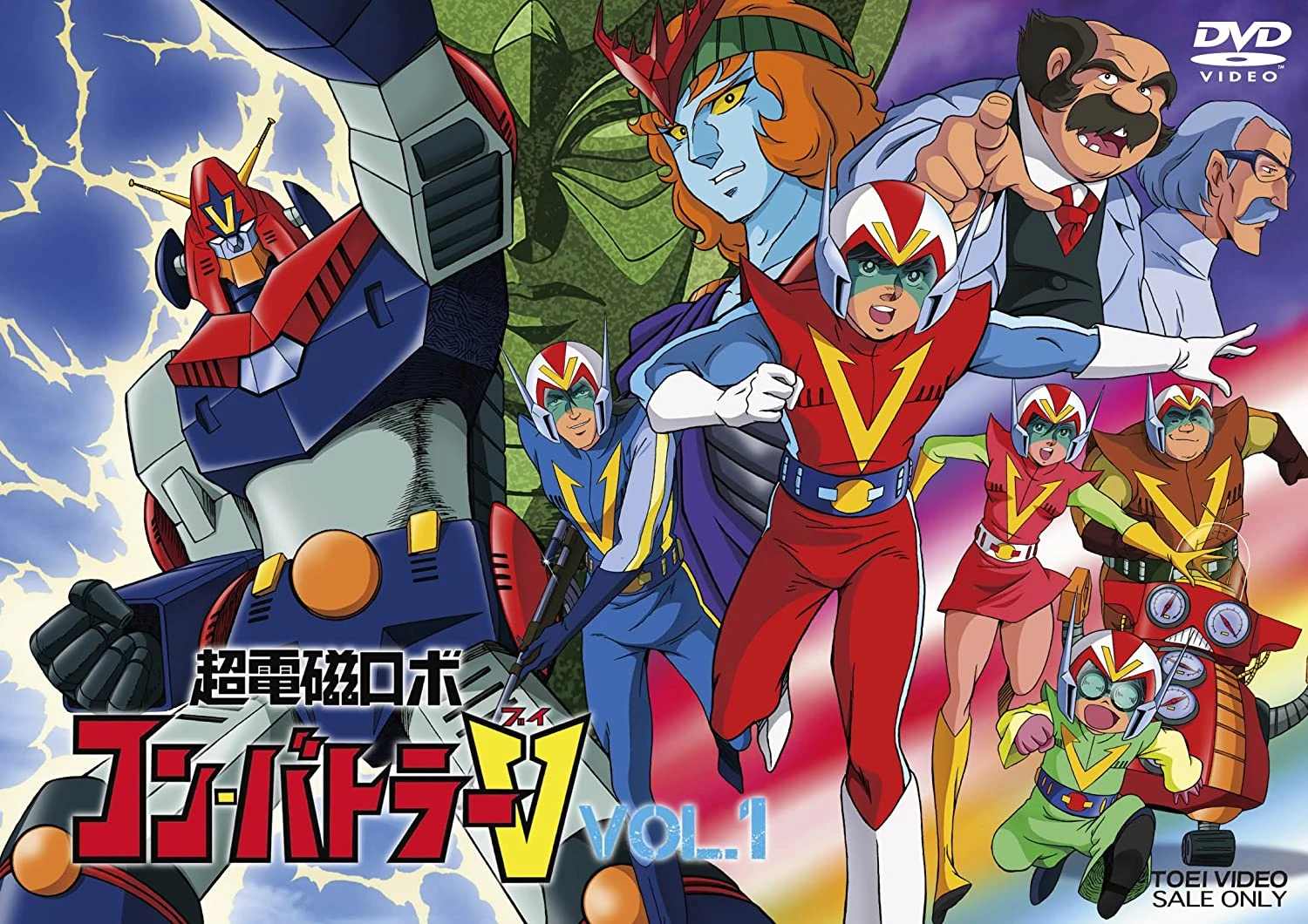
The first Super Electromagnetic robot! Combatller V combined a fast-paced Monster-of-the-week with dramatic development, taking advantage of the 5-man team format.
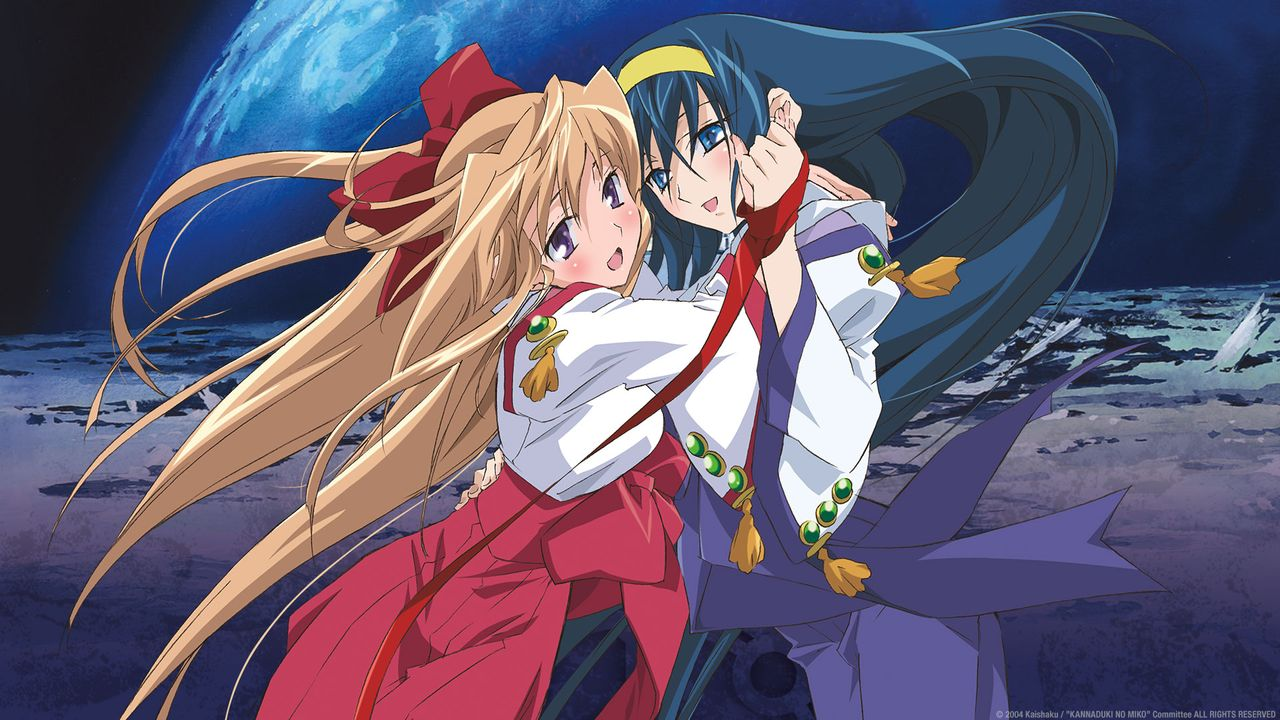
A combination between Japanese myths and mecha. An intricate relationship between 2 girls and one guy, with intense Super Robot combat in-between.
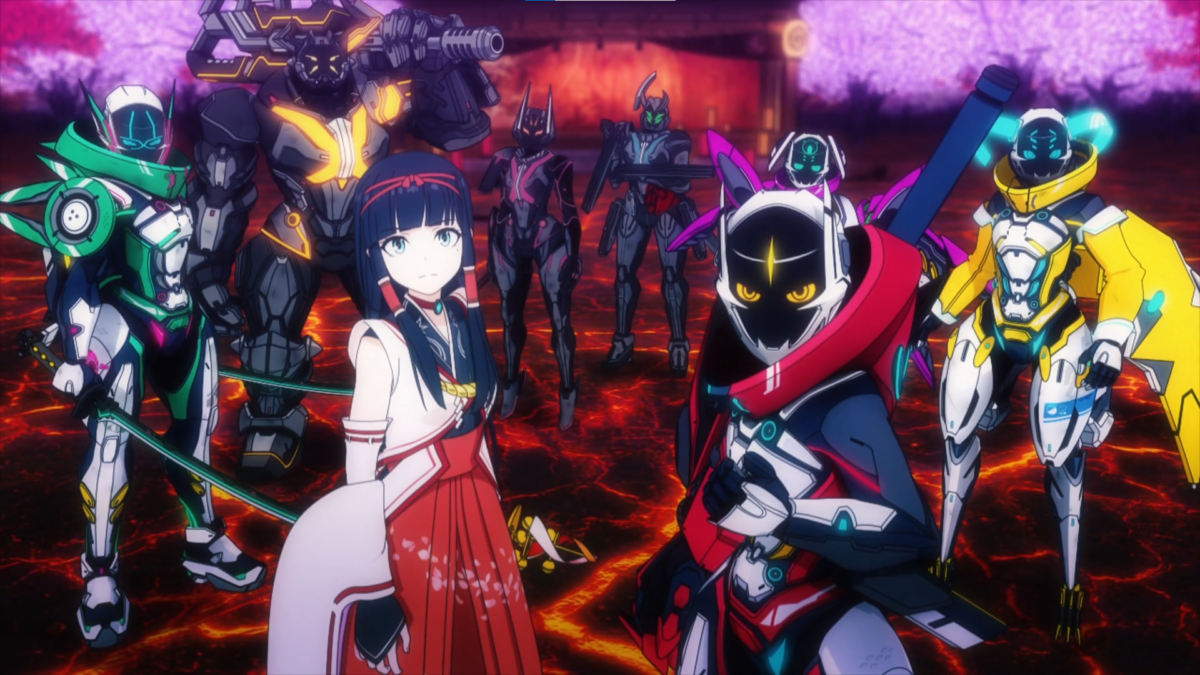
An original Toku-themed anime that is packed with action. While facing the challenges of full 3DCG animation, Shikizakura delivered an inspiring and emotional story for would-be heroes.

A chance to see the A.D Police from Bubblegum Crisis in honorable action. Two detectives take on cases of rampage Boomers, unraveling a sinister plot that can change the world.
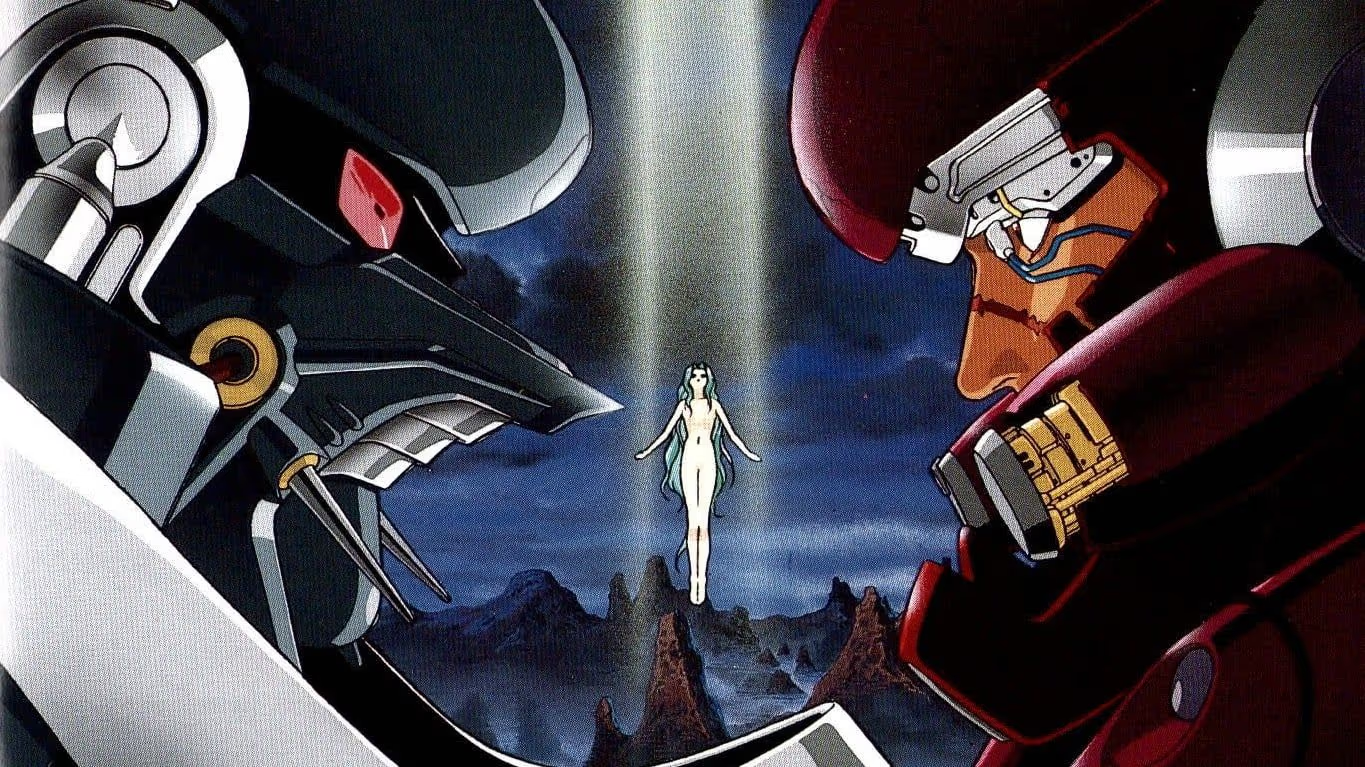
An apocalyptic tale of burning sand and monsters. A young man set out for vengeance, acquiring the usual hot chick and robot buddy on the way.
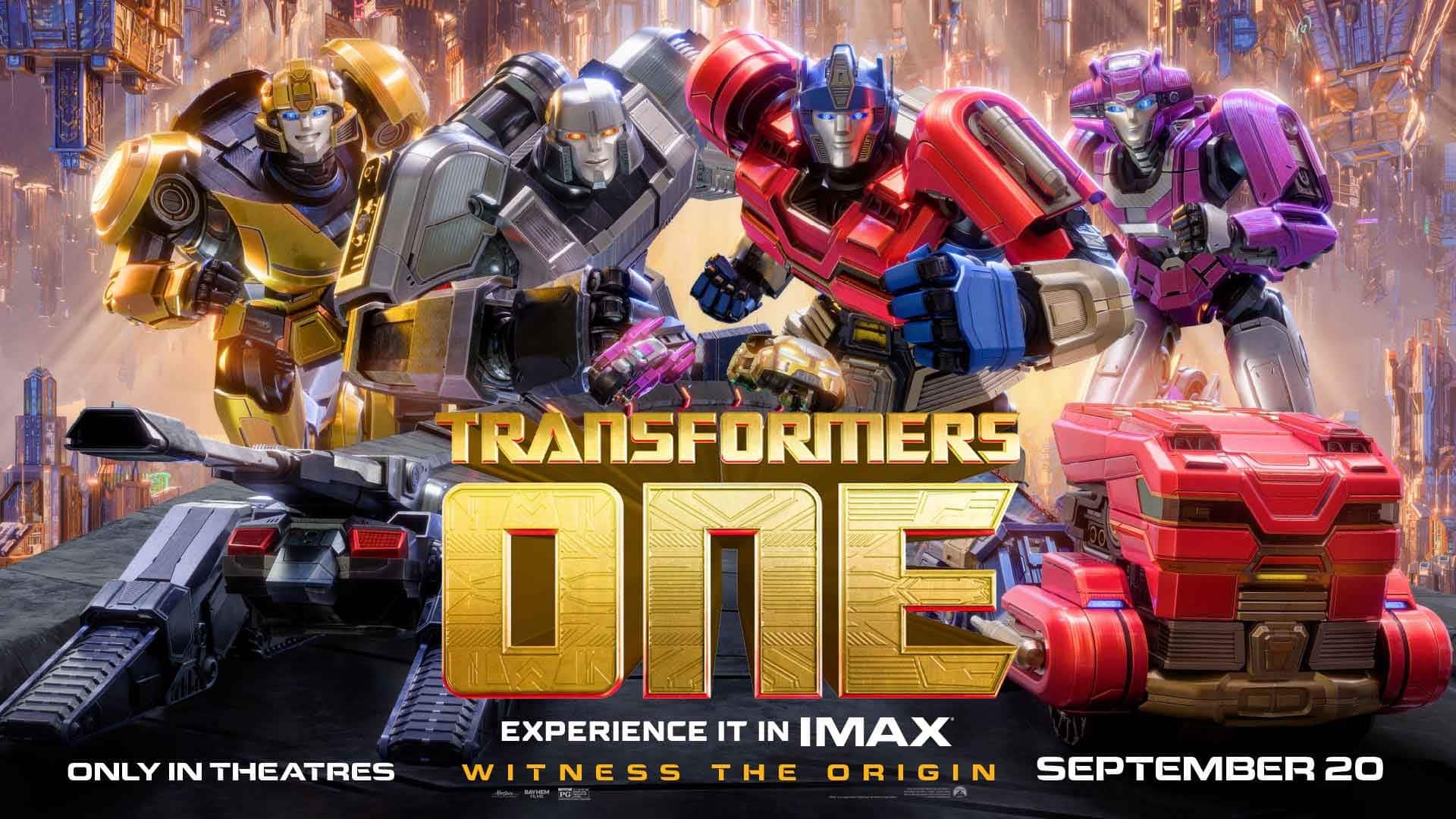
A refreshing tale about how the best of friends became sworn rivals. A vibrant, well animated movie where characters shine through their own merits, and bring a new wind to the franchise.
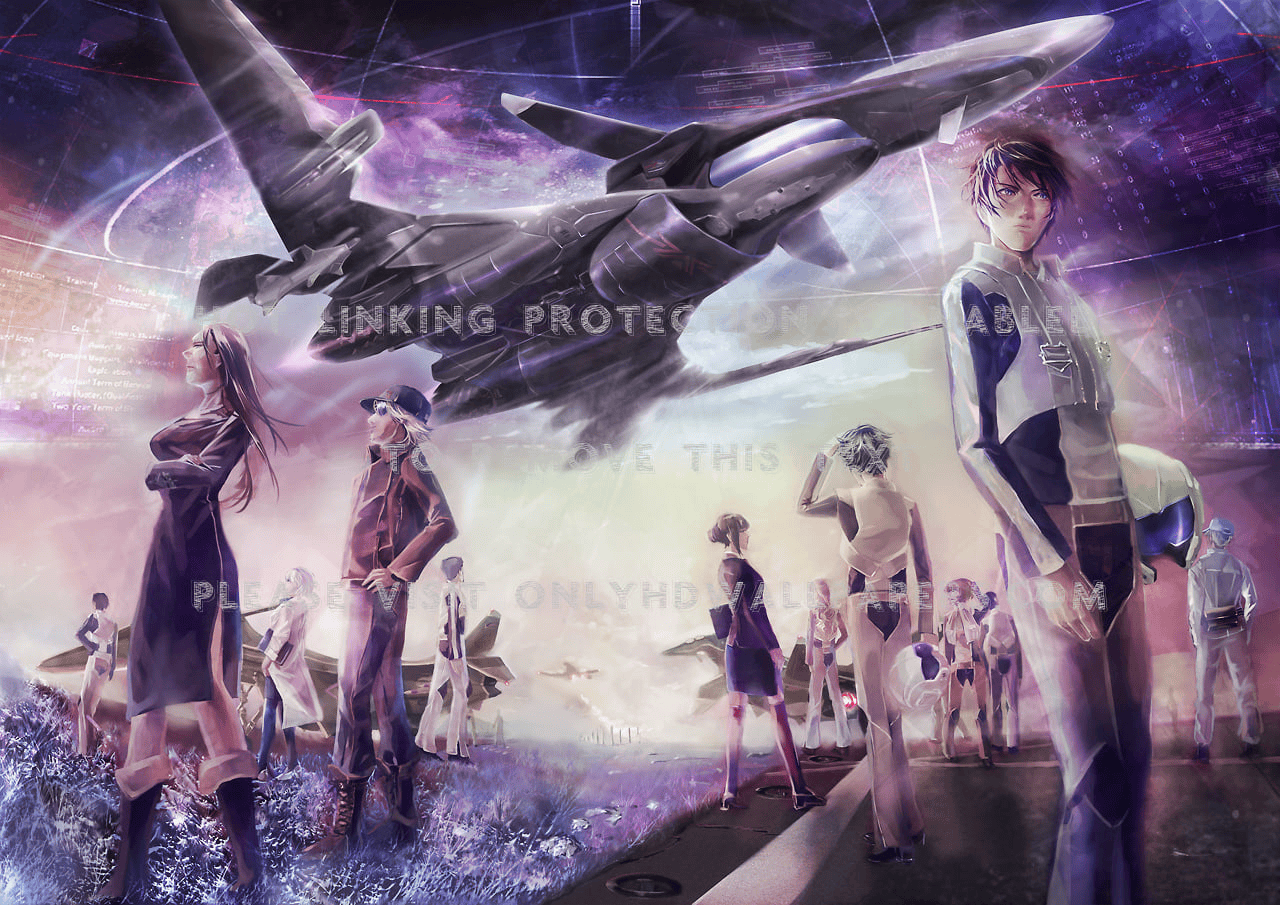
The fruit of collaboration with Japan Air Self-Defense Force, the air combat scenes of this anime is what set it apart

A futuristic world where sports are played in the most dirty way possible, a team of good-hearted robots gather to prove that good sportsmanship can prevail in any era.
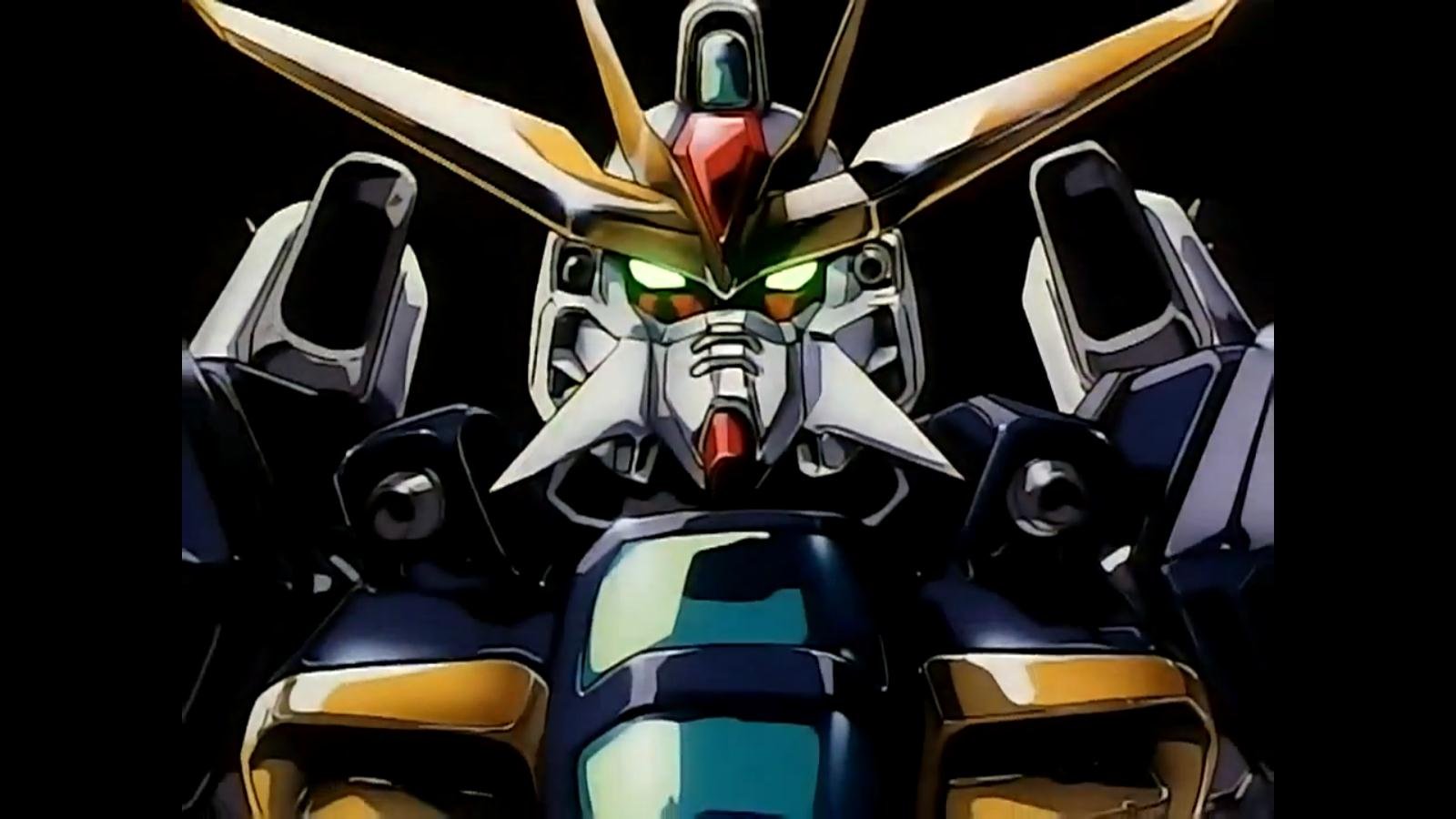
Despite often being overlooked by newer fans, After War Gundam X is a must watch for any Gundam lovers.

The fusion of Man and Beast and Machine. Dancouga became an iconic Super Robot that merged aspects of Super Robot with Real Robot.

Passion makes satisfaction. A group of student show what they can accomplish with a mecha short film that leaves you desperately wanting more!
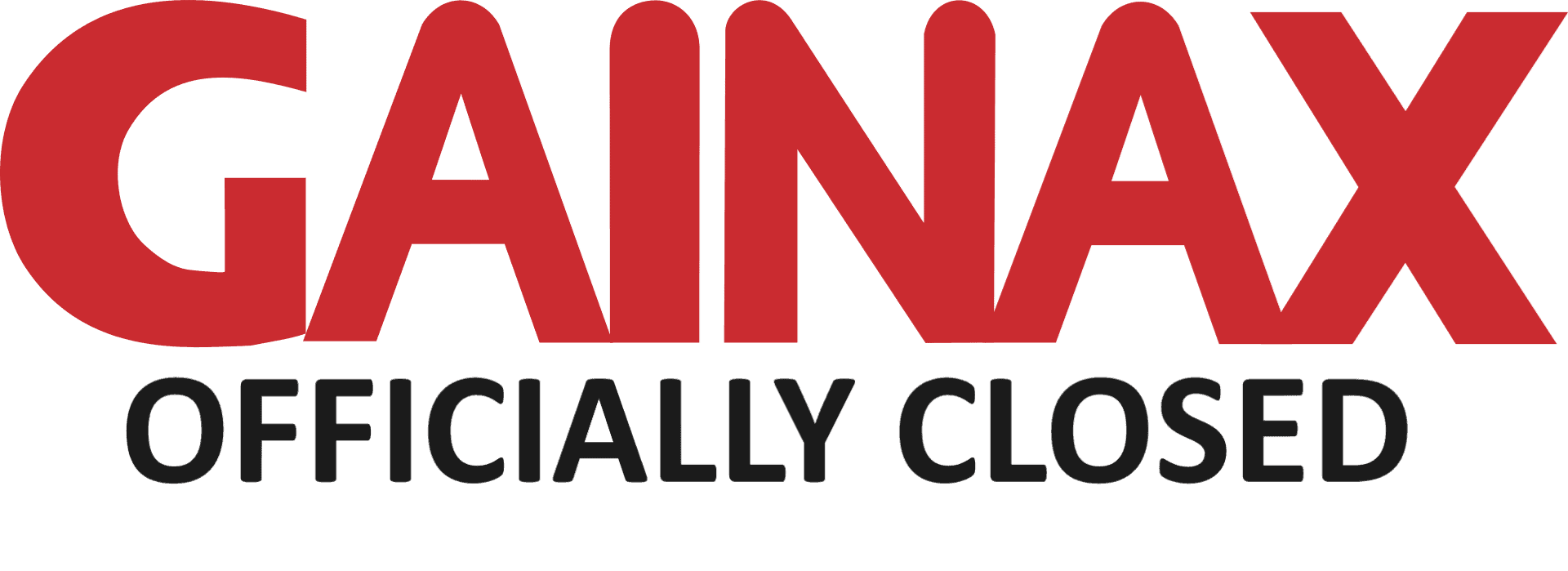
The end of a legend dragged through the mud from the peak of success. Studio Gainax is a regrettable case where high execs ruin a respectable legacy.

A man thrown into a stranger world naked ended up fighting against god. What more could you ask from a mecha show? Eh…maybe better writing?
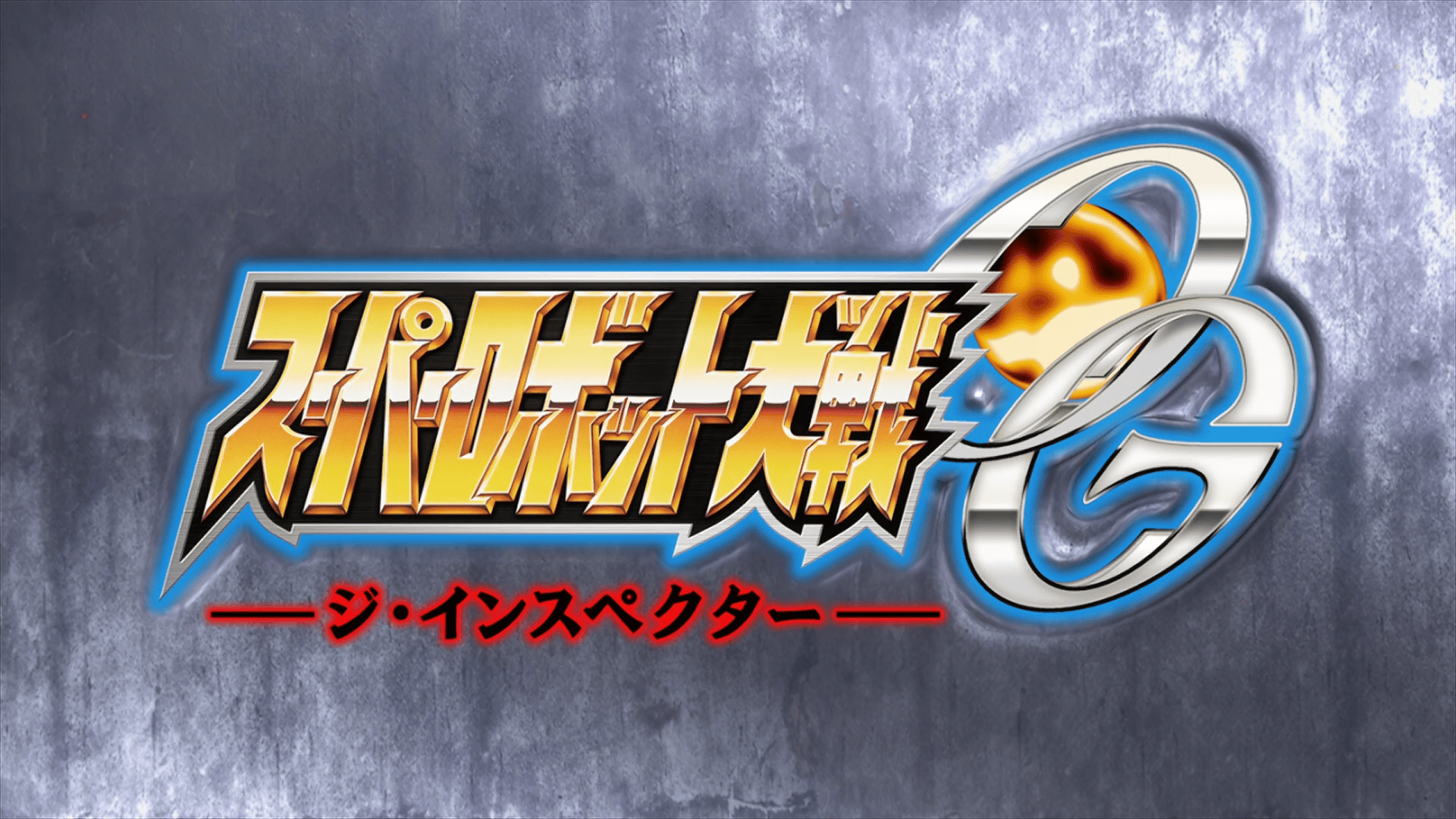
With utmost love for the Super Robot Wars series, Obari crafted one of the most prominent Mecha anime of modern generation.

A seemingly impossible task of building Mazinger Z hangar in real life. A ragtag team of a planning company assembled the Fantasy Division to turn fiction into reality.

A light-hearted series that turned into intense space opera. The Girl Who Leapt Through Space leaps through many genre to deliver a unique experience and turn everyone’s expectation upside down.

A desolate planet now submerged in liquid. A totally unique and fresh mecha series where all the robots are underwater. Oh and there’s also a talking whale.

A love story that spans through 12000 years. The war between Angels and humans fueled by passionate emotions. Shoji Kawamori shows us why he’s the master of the sky.
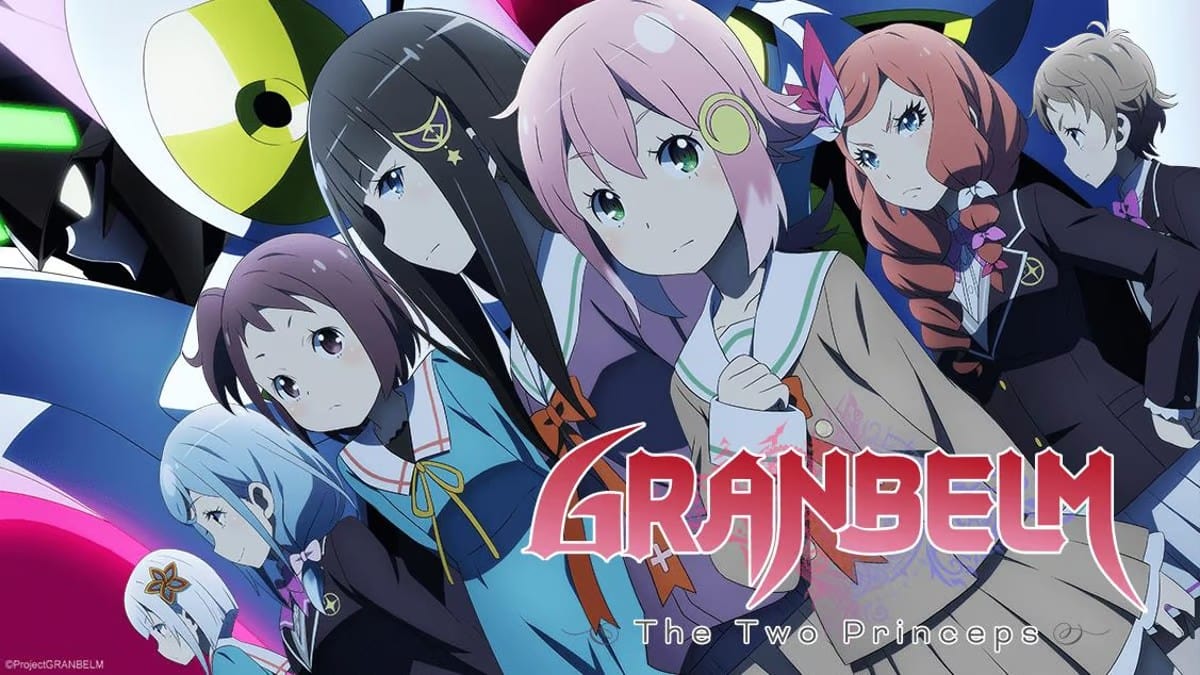
What happens if we mix Mahou Shoujo, Mecha and Battle Royale into one? We get Granbelm – an emotional story about the lives of young girls entangled in an ancient war.
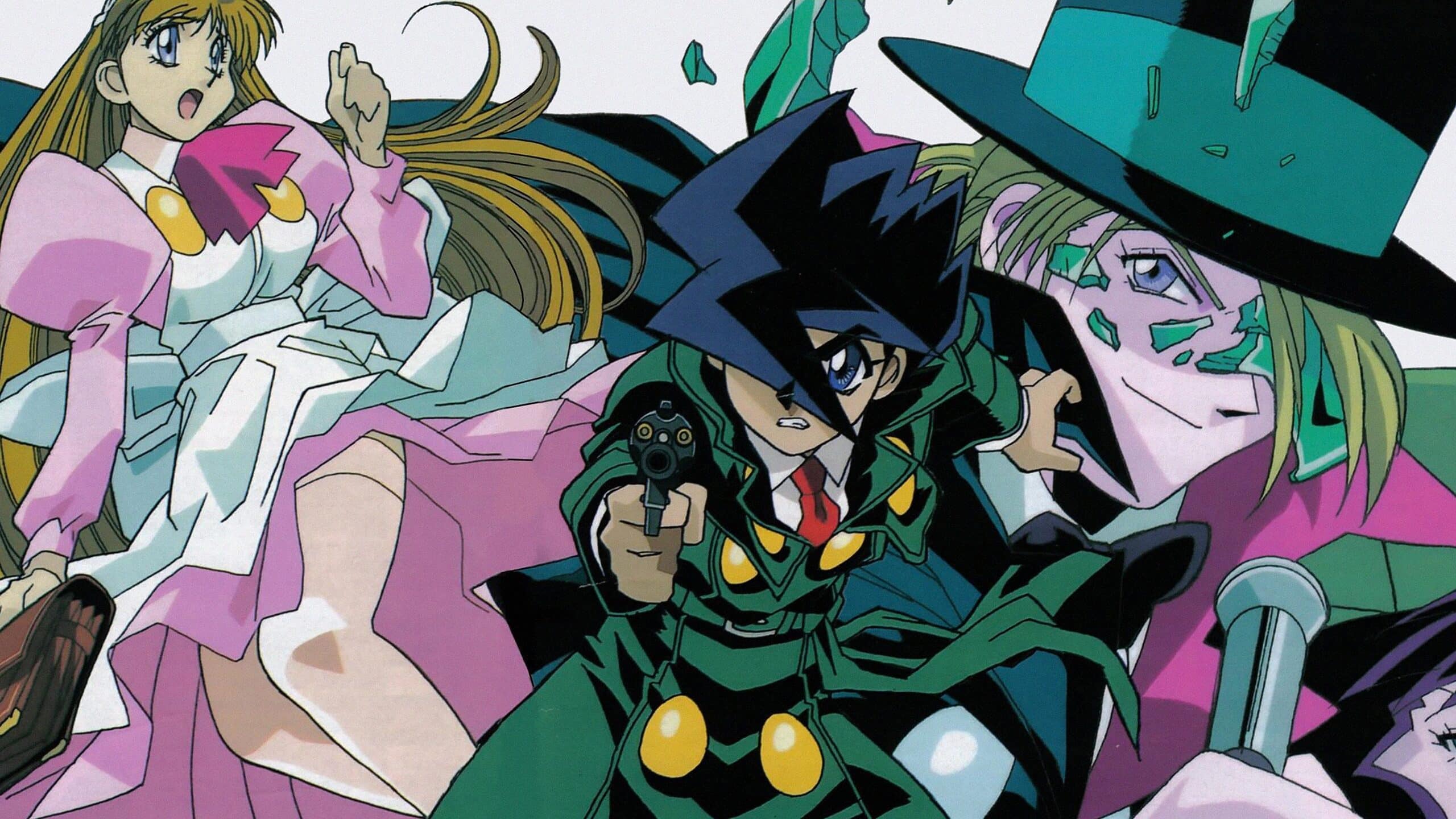
In the city of smoke and steam, a young kid works as a detective alongside his nurse and butler to protect the peace. An old classic for fans of the steampunk style.
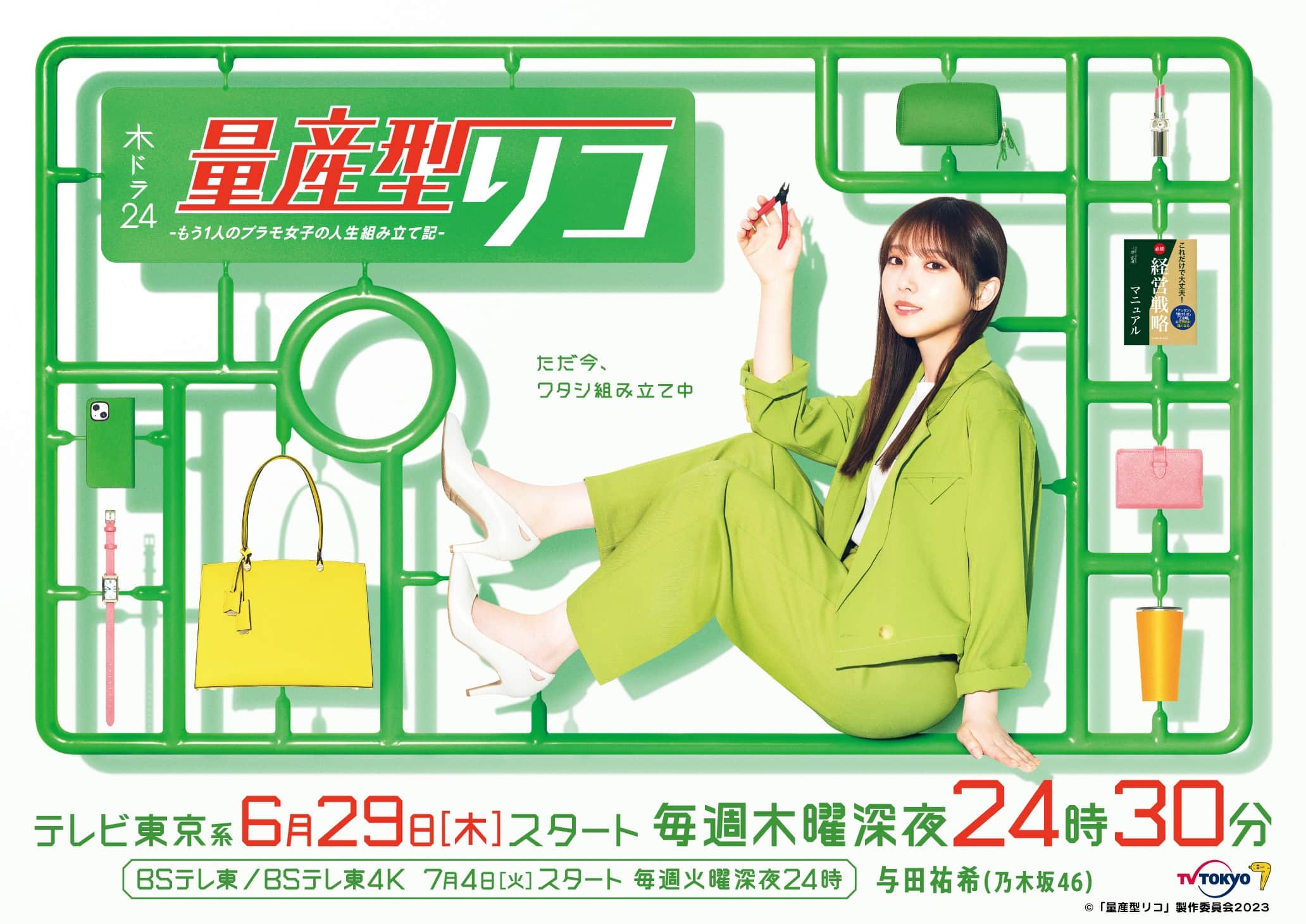
The 2nd season of the lovely Mass-Produced Riko series. Join Riko and co as they embark on an all new venture, while drawing interesting lesson from building plastic models.

The long-awaited continuation of the mecha isekai of pain. Season 2 of Muv-Luv Alternative is definitely trying to woo you by slamming intense scenes at you – but is it worth it?

One of the most difficult to adapt Mecha series, Muv-Luv Alternative anime started off with a questionable season, but you should still check it out.

A remake of another Tatsunoko hero. The Space Knight returns with a completely new story, design and brings us on an emotional journey of a tragic hero.

An OVA that took place between the movie and Exodus, Behind The Line shows us how the characters mature throughout the season, with a hint of retrospective nostalgia.
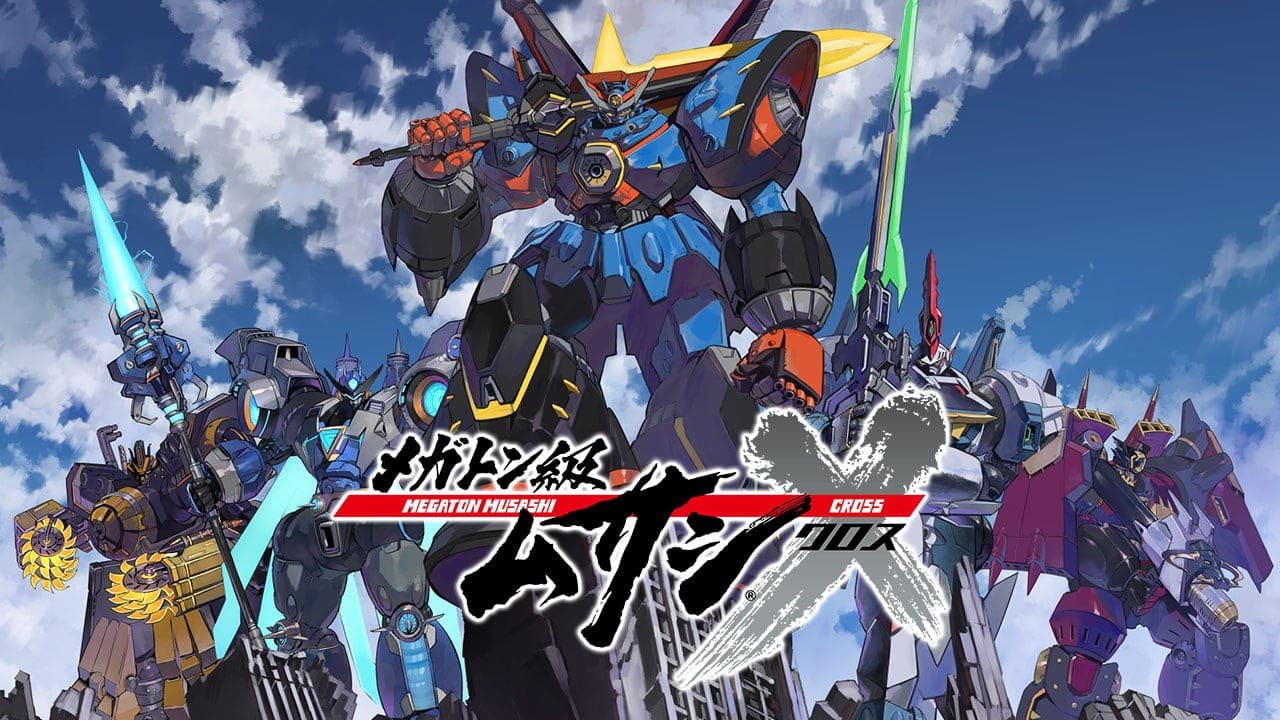
The continuation of the hot-blooded saga, this time filled with emotional drama and even more badass action. A great video game adaptation but not without flaws.
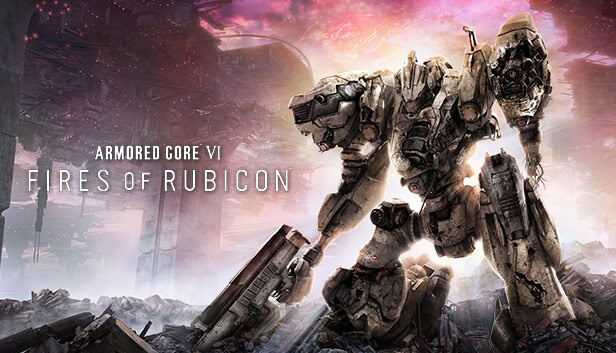
The long awaited legend’s return that satisfy all mecha fan’s longing for a good game. Armored Core 6: Fires of Rubicon is an experience you have to play to believe.
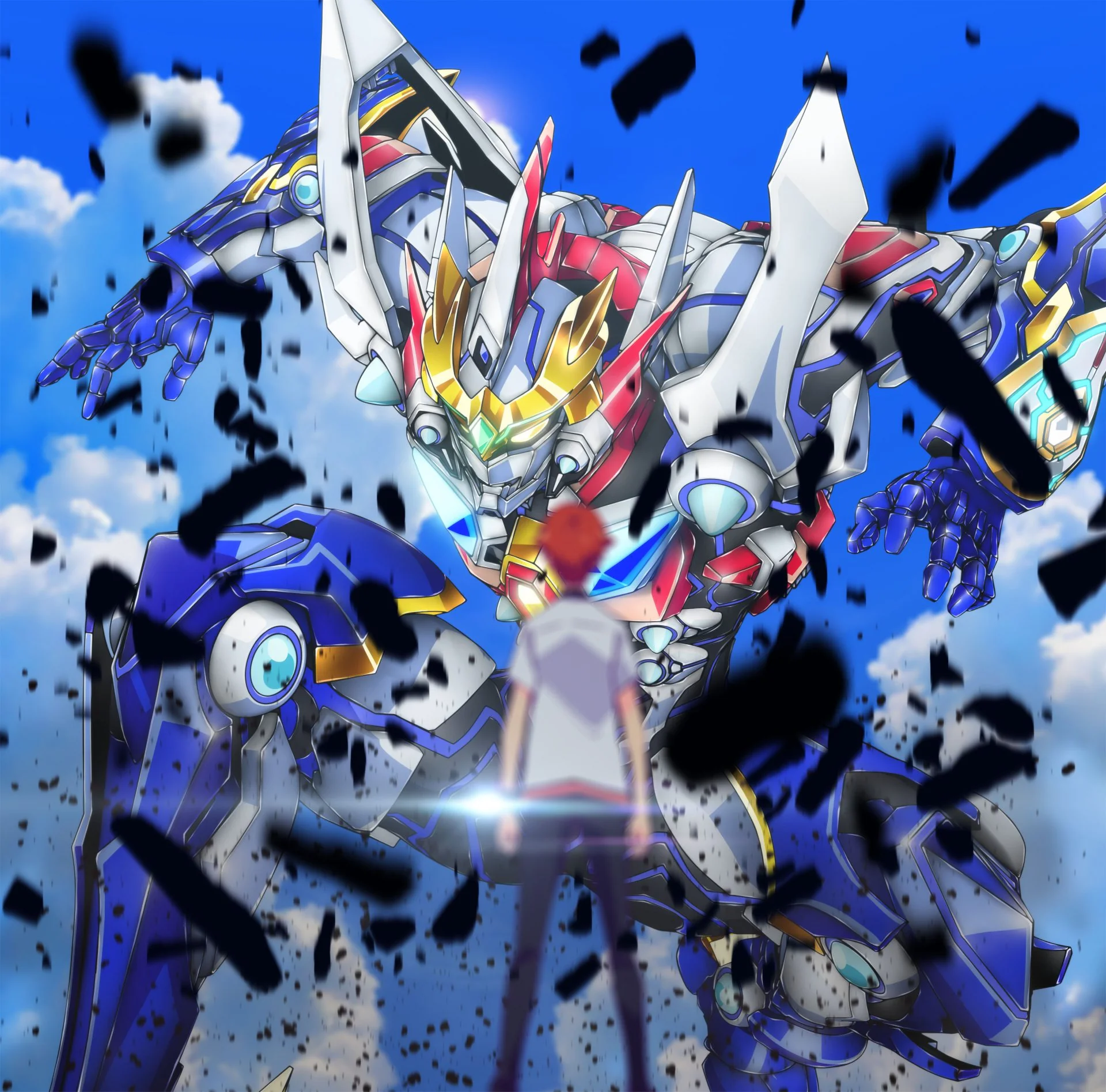
Universes collide as the cast of Gridman and Dynazenon is caught in a dimensional anomaly. But what’s more troubled is Yuuta – who has to become Gridman again with a troubled heart.
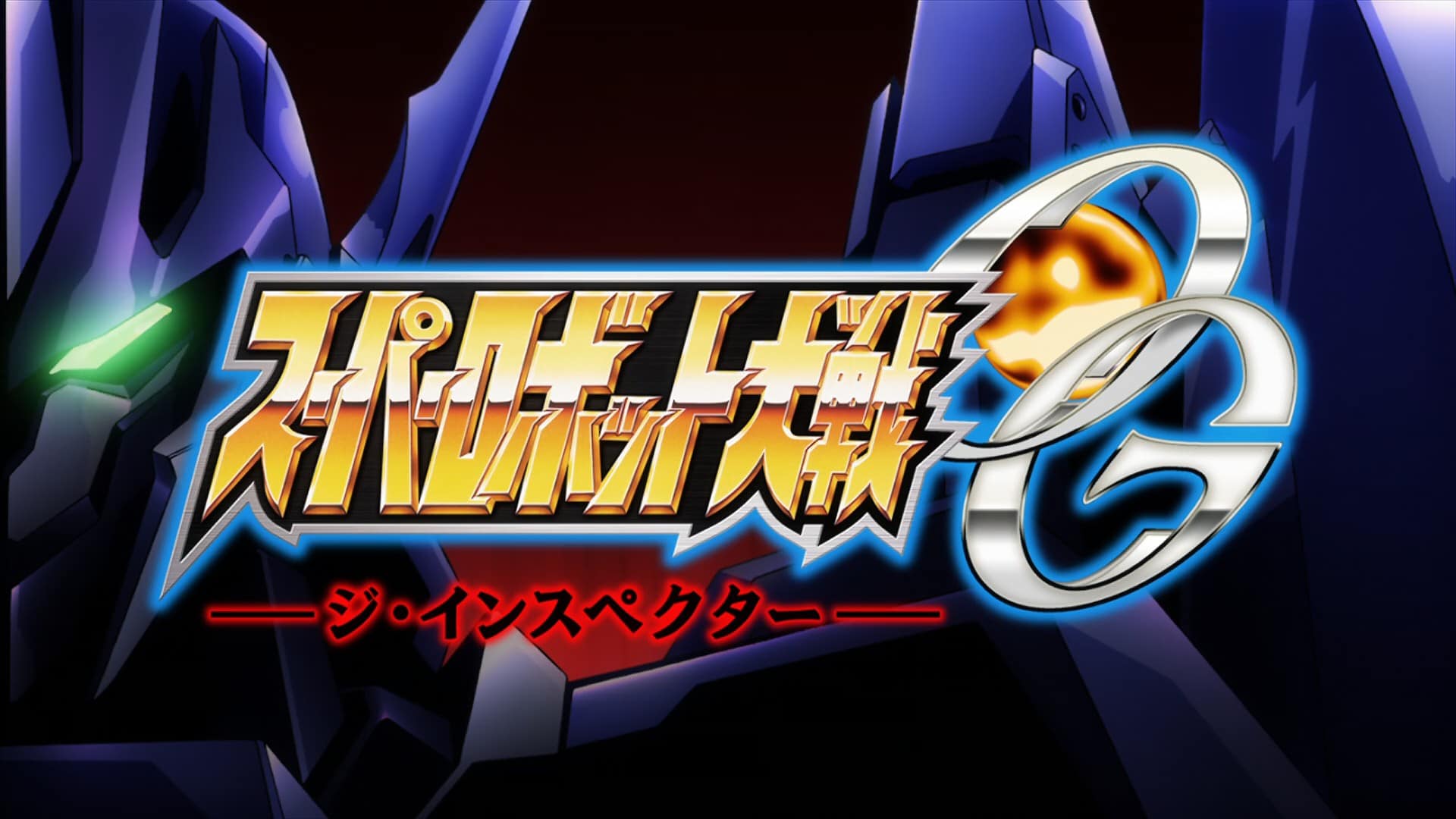
When you talk about the most badass mecha, you have to mention SRW OG and Masami Obari. And when these two combine, you get the best SRW anime of all time.
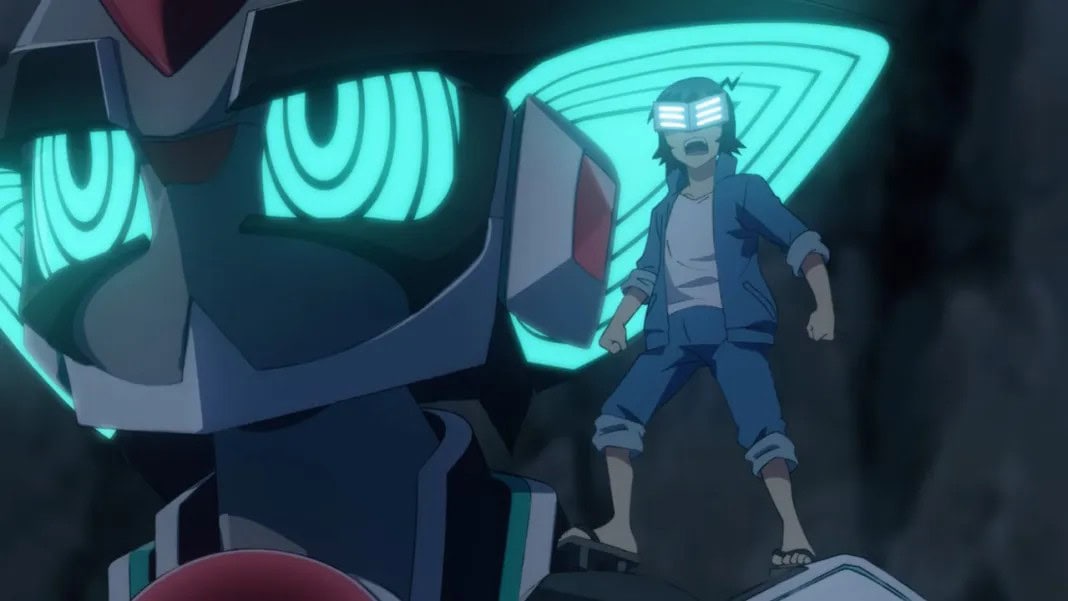
A unique series where the true pacifism versus justice. A bold premise and interesting gimmick make Planet With a very selective series in terms of audience – but it definitely deserves a chance.
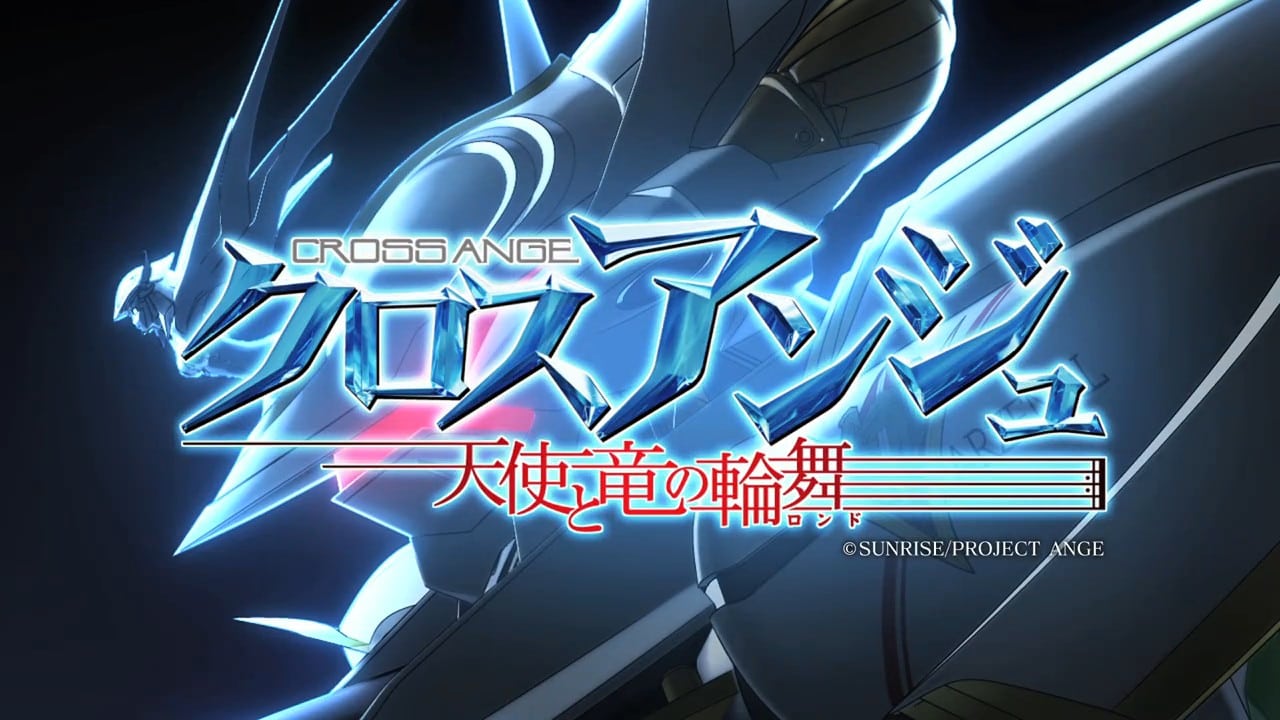
From the studio that created Buddy Complex and Valvrave, Cross Ange is another Sunrise’s original that challenges the limit of its audience once more .
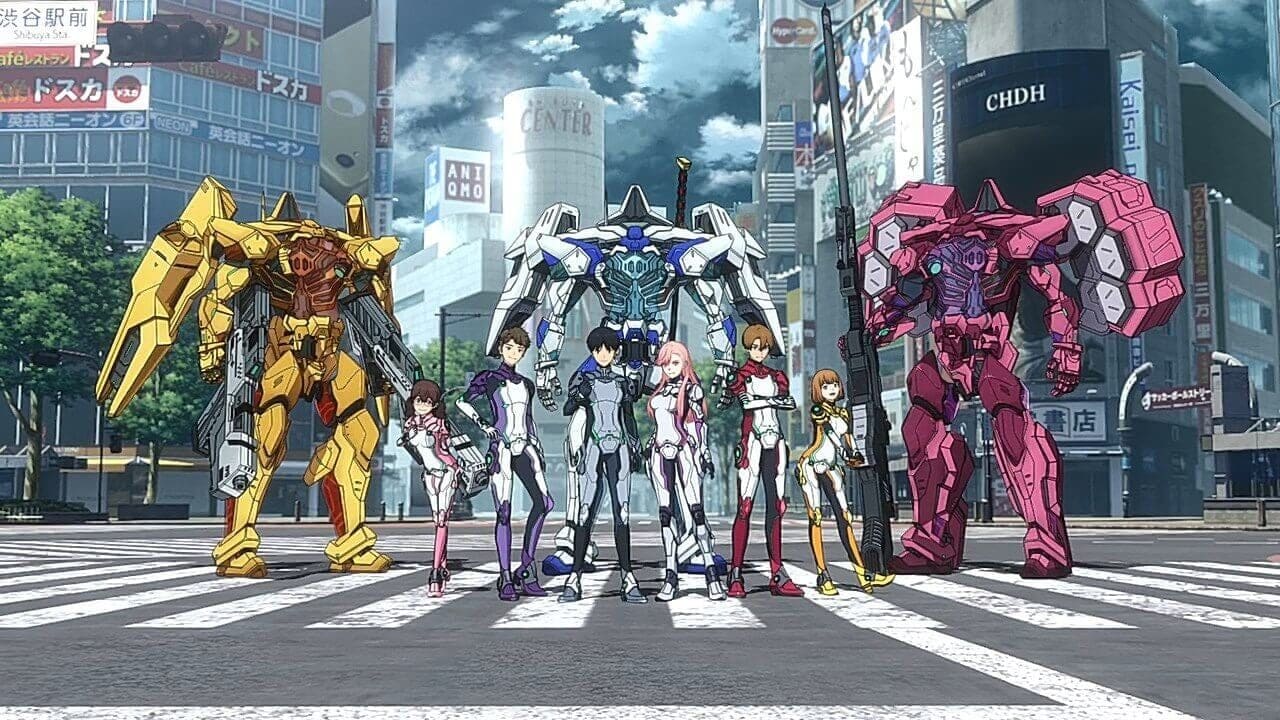
What will you do if you’re teleported to a time with giant grotesque monsters? For teenage student Daisuke Doujima, it’s a perfect chance for him to become a hero, and a saviour. But can he?
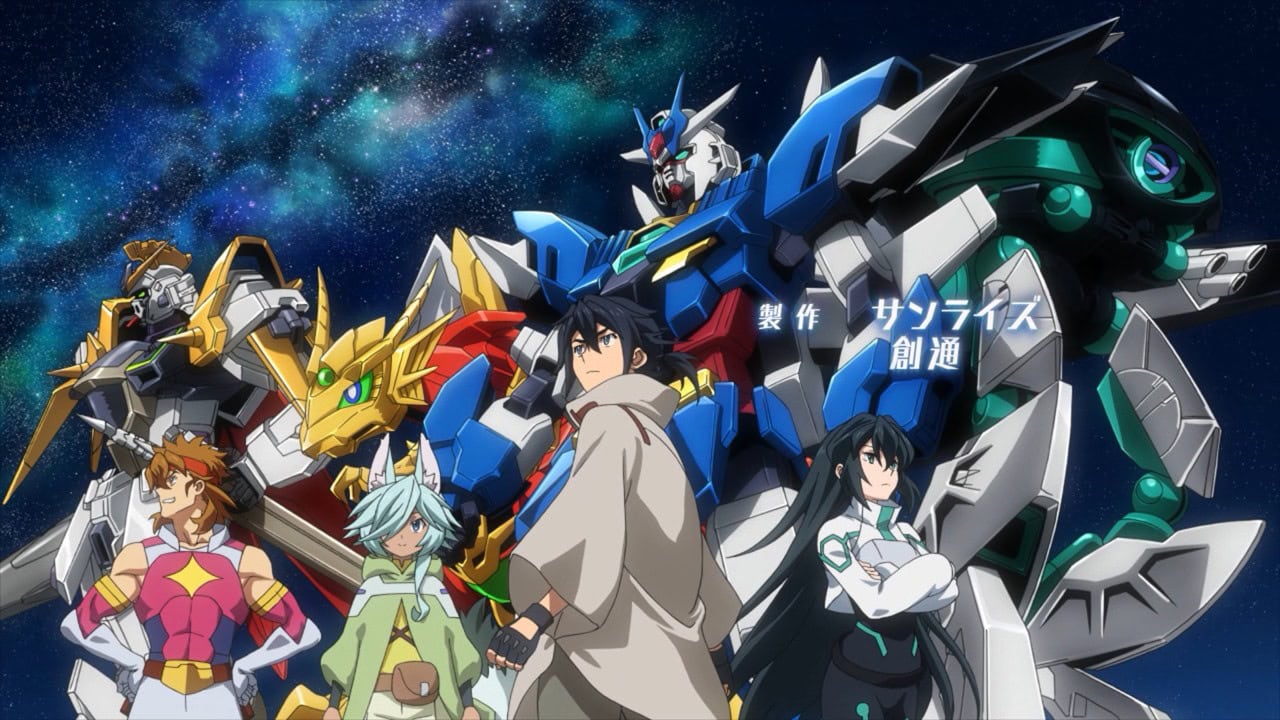
After 2 lukewarm series, Gundam Build rose to form again with Re:Rise. A story with deep characterization for a diverse and likeable cast and awesome Obari action.

Time to go digital! Build series is going full SAO and virtual with Build Divers – a light-hearted series and fun to enjoy without the need to complicate things.

The Super Graviton God is back! And this time the threat just got more vile. But Gravion also receive an upgrade…in true Obari fashion. Let’s see how the sequel holds up!

Following GBF, Sunrise wanted to capture the magic with TRY. However, they fell just short of greatness but still create a series with amazing Gunpla battles.
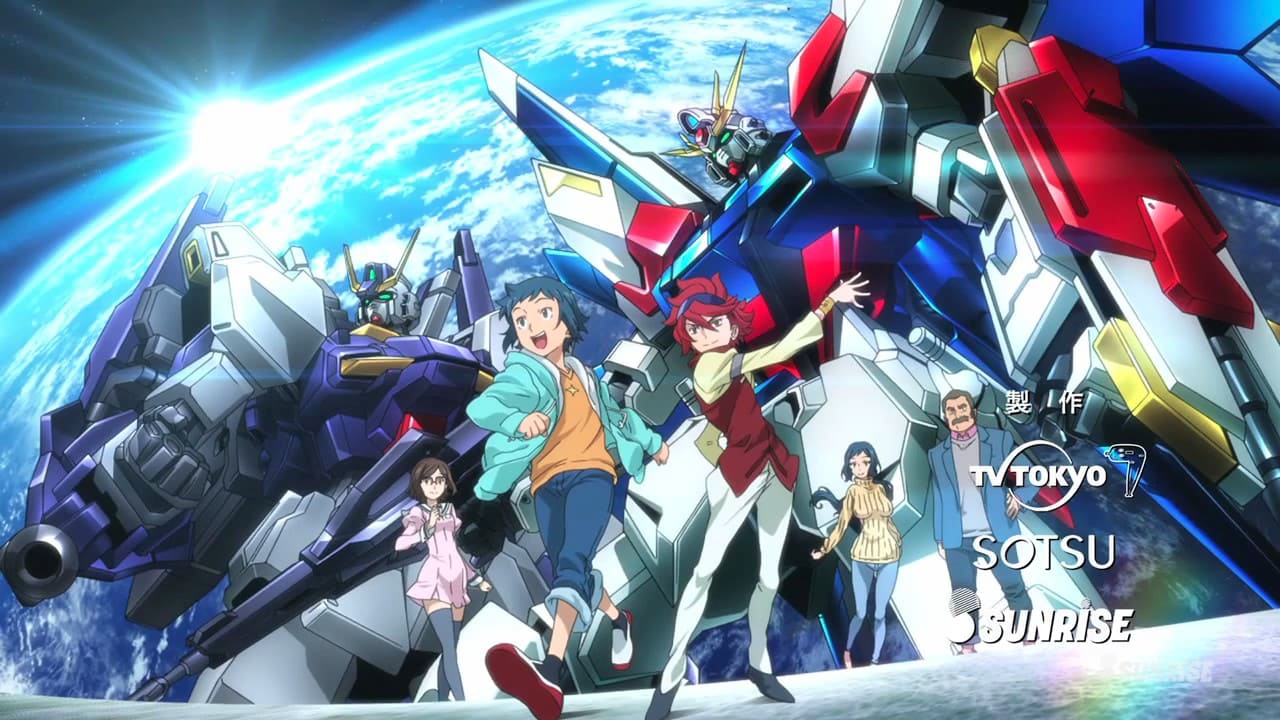
A hobby turned combat sport. Sunrise’s effort to attract new fans turned into a compelling series with gorgeous battles featuring iconic MS from the franchise.

The first animated Build series, Beginning G opened up new venues and excitement for the hobby, with light-hearted yet intense traditional MS battle.
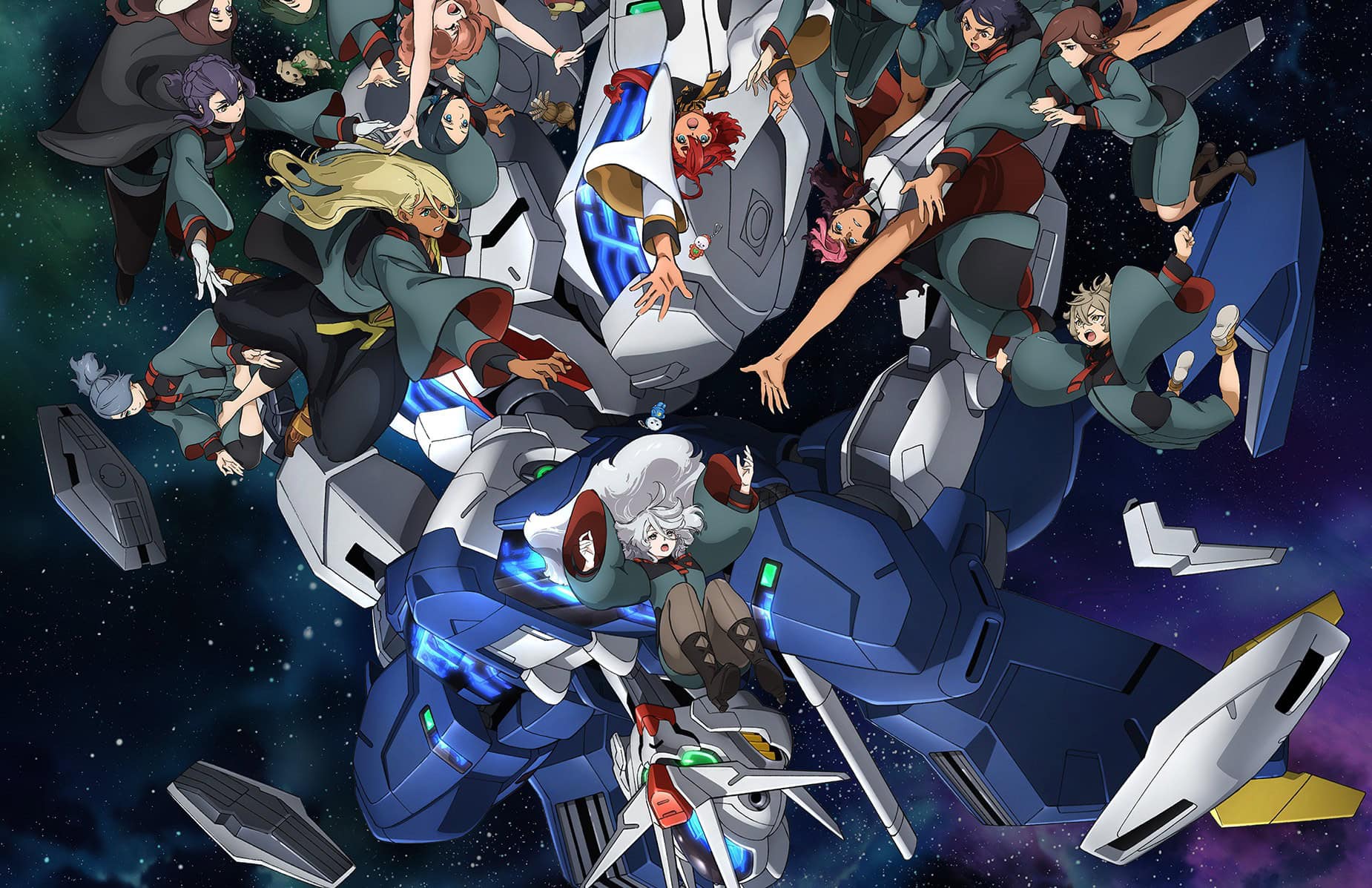
The shortest tv series Gundam ever, but was one of the most popular. G-Witch put Gundam back on the mainstream map, but do fans love it like non-fans do? The answer is quite divisive!

A heavy-weight in Masami Obari’s repertoire. Choujuushin Gravion is average in production quality, yet it is imbued with the spirit of the most badass over-the-top director of all time.

Do you want a Gundam series with a brighter tone but still has banger battles? Then Metal Armor Dragonar is a perfect series for you!

A Super Robot versus Alien mecha series, but this time it’s also infused with the intricacies of human’s most sacred bond: Marriage. Godannar put that relationship to the test!

A series about building regular model kit, and using them to find inspiration in life. A very uplifting and chill series for mecha fans to change their perspective on their hobby.

The sequel to SEED – a series that brought Gundam on top of the radar. Destiny is a sequel that earned both the intense love and hate within the fandoms.

The 3rd Tokusatsu series by Director Anno Hideaki. Shin Kamen Rider revisits the core message of what it means to be a Rider and to fight for justice while putting a modern spin on it.
